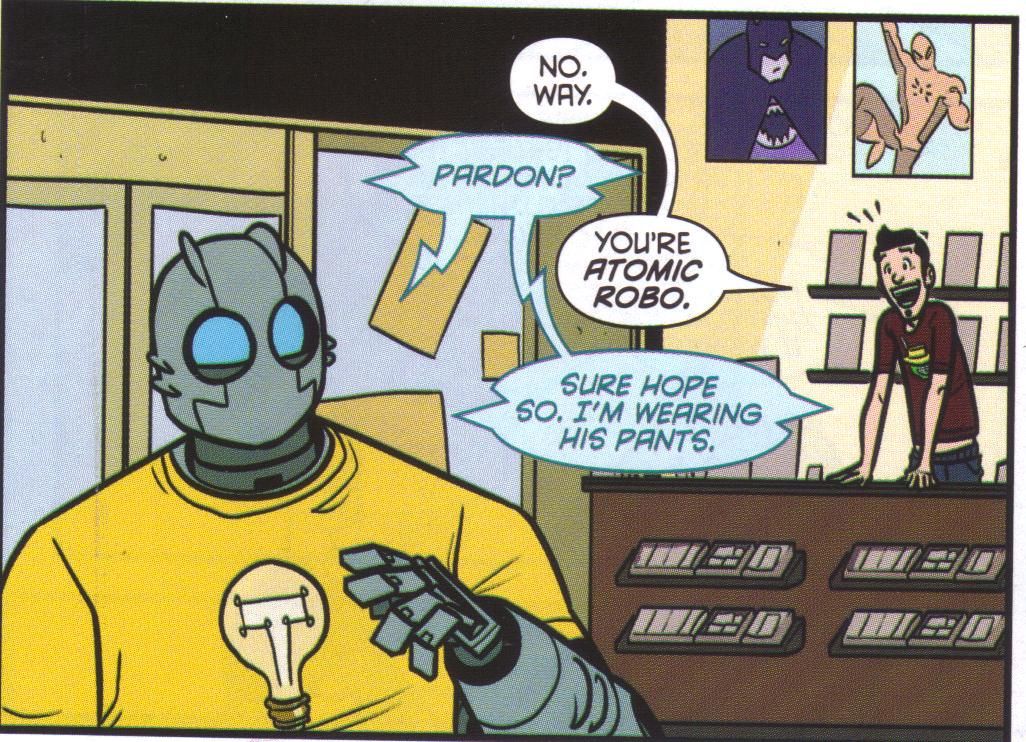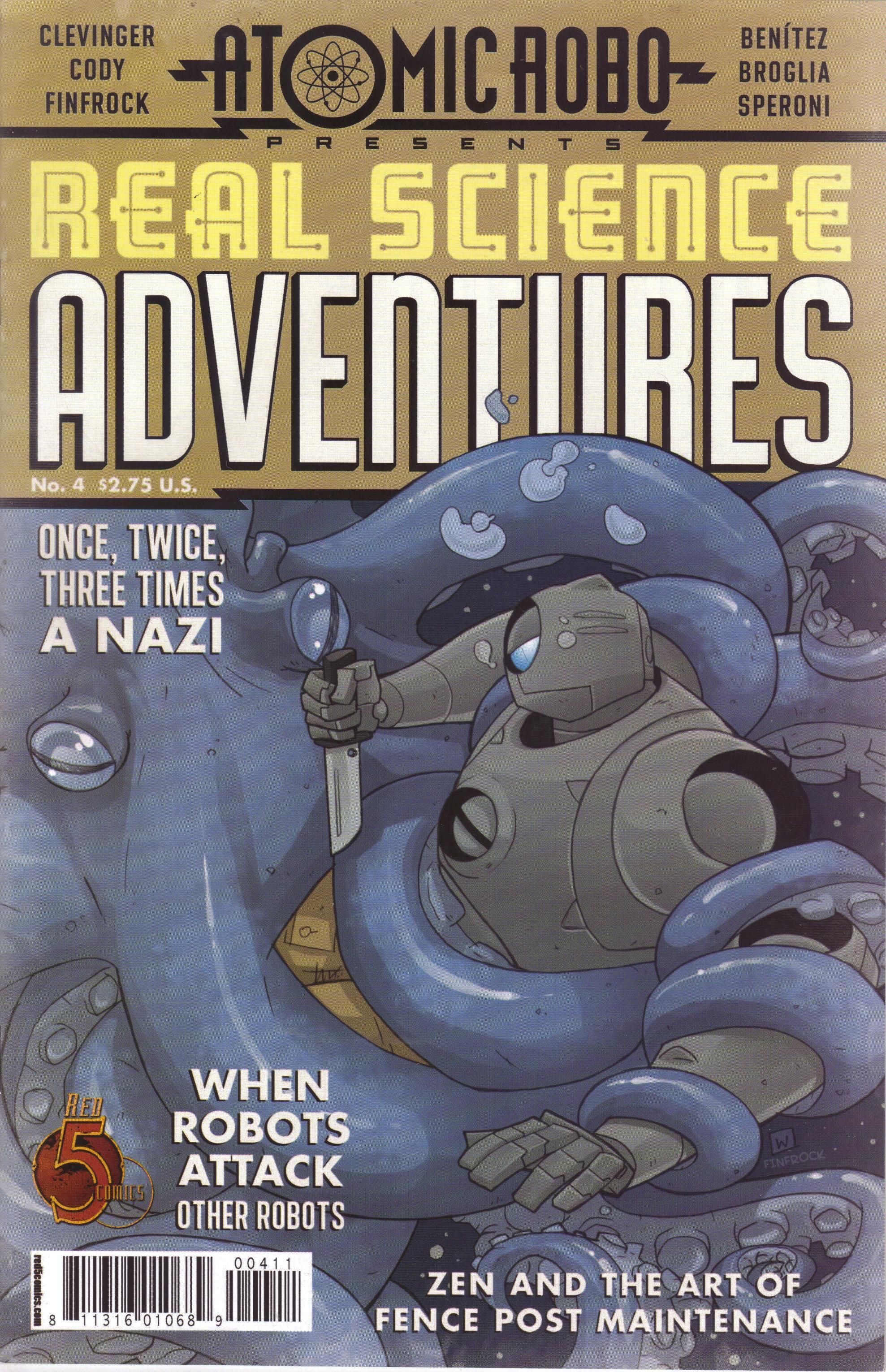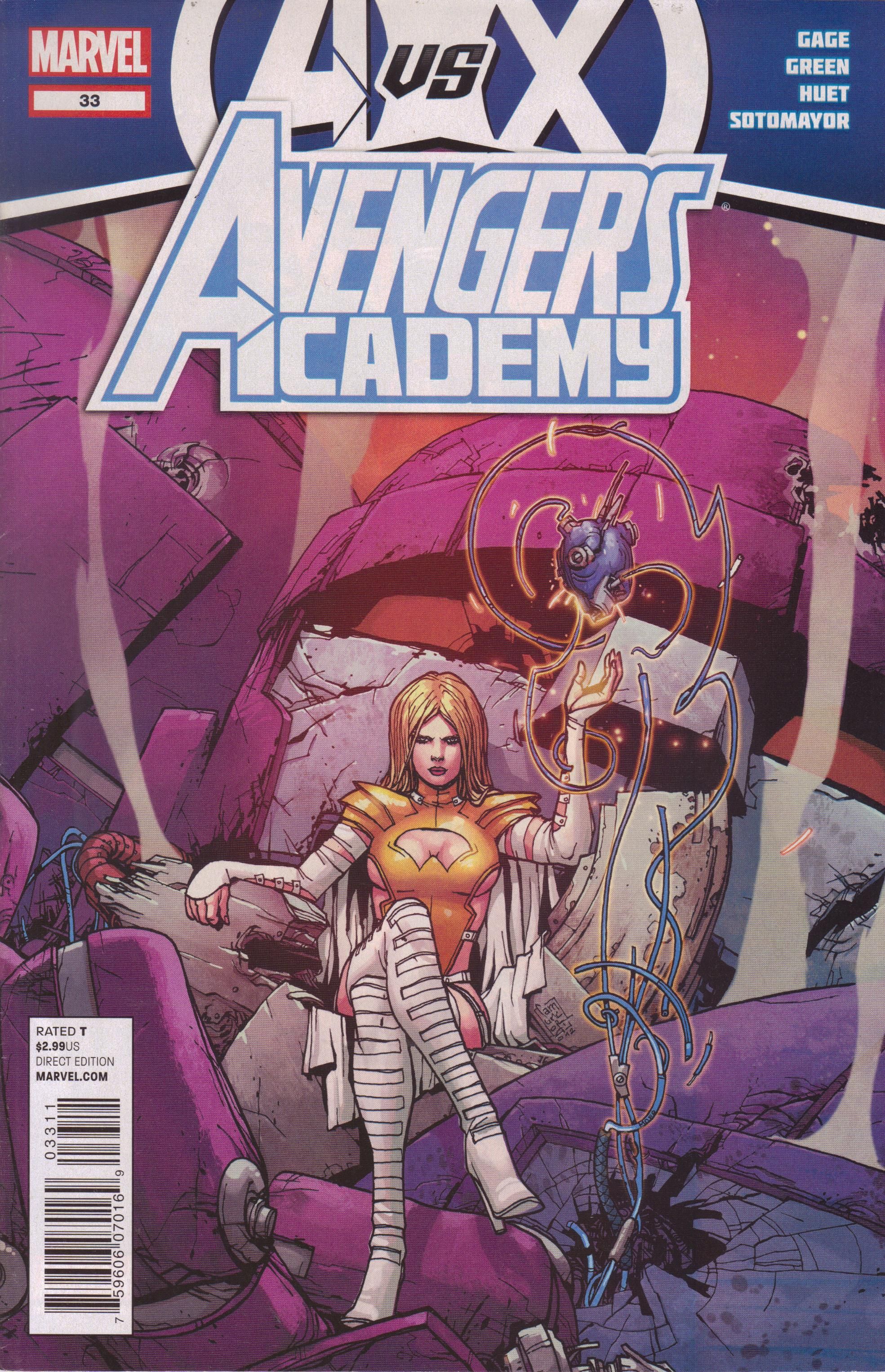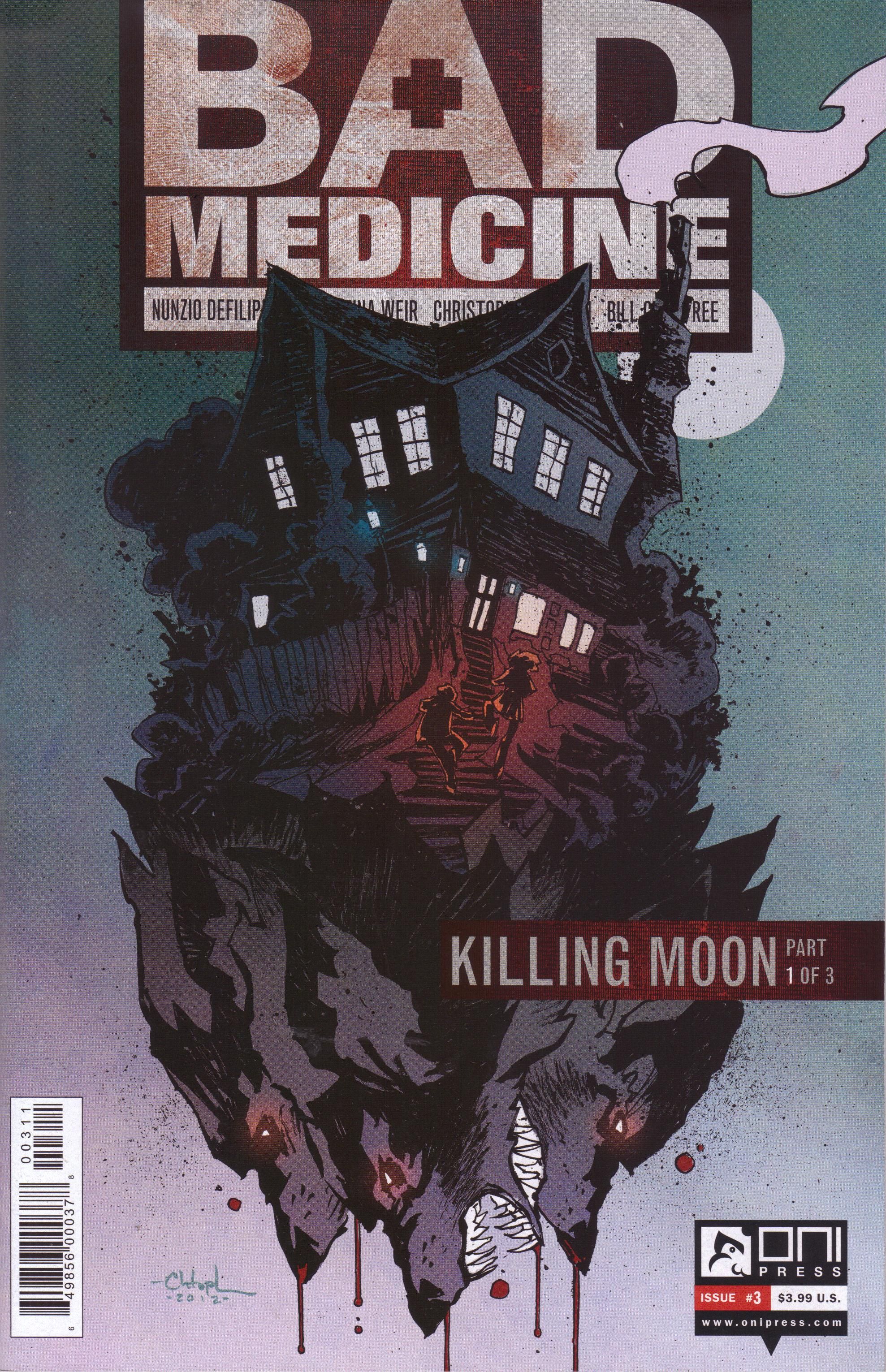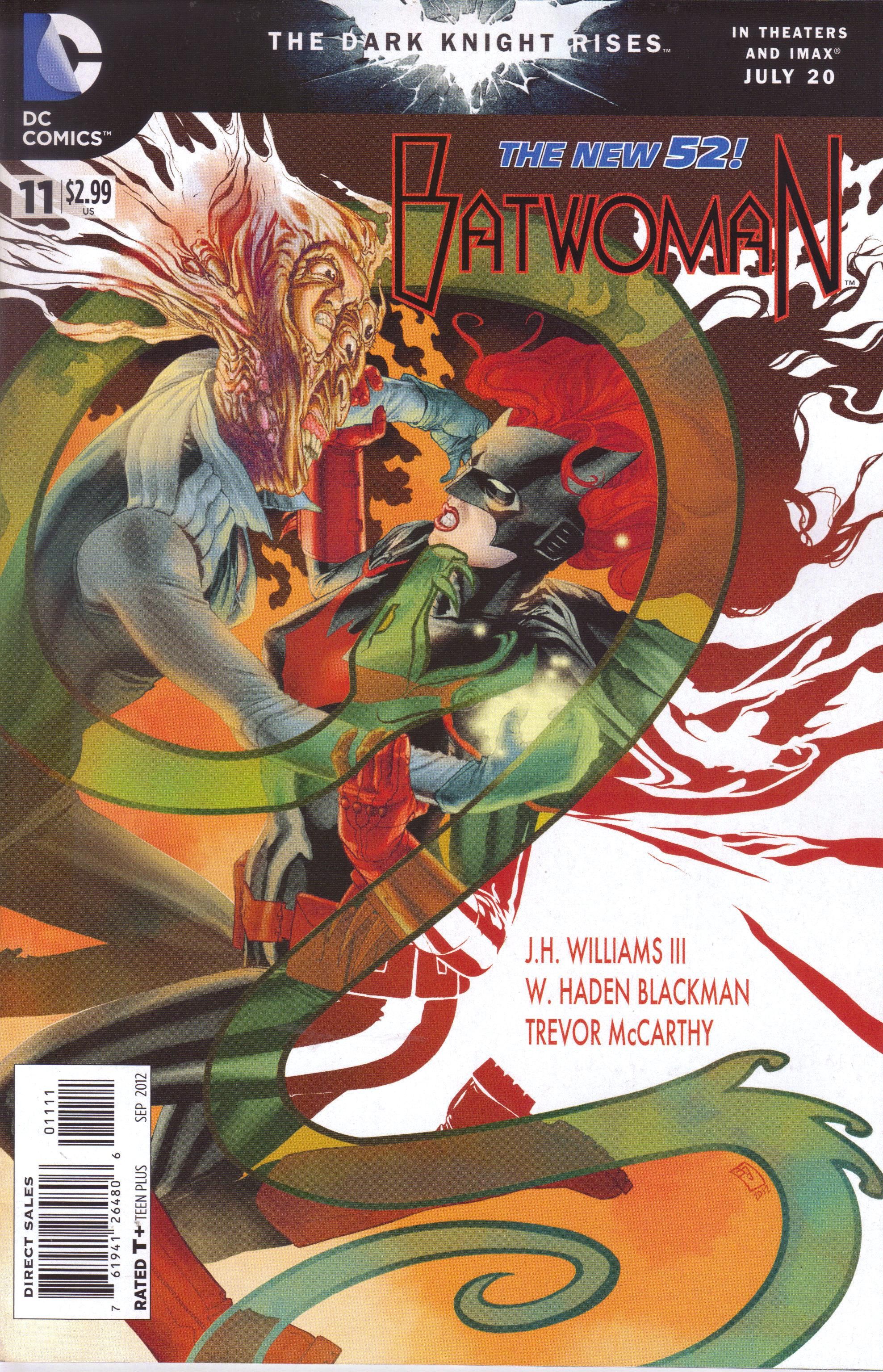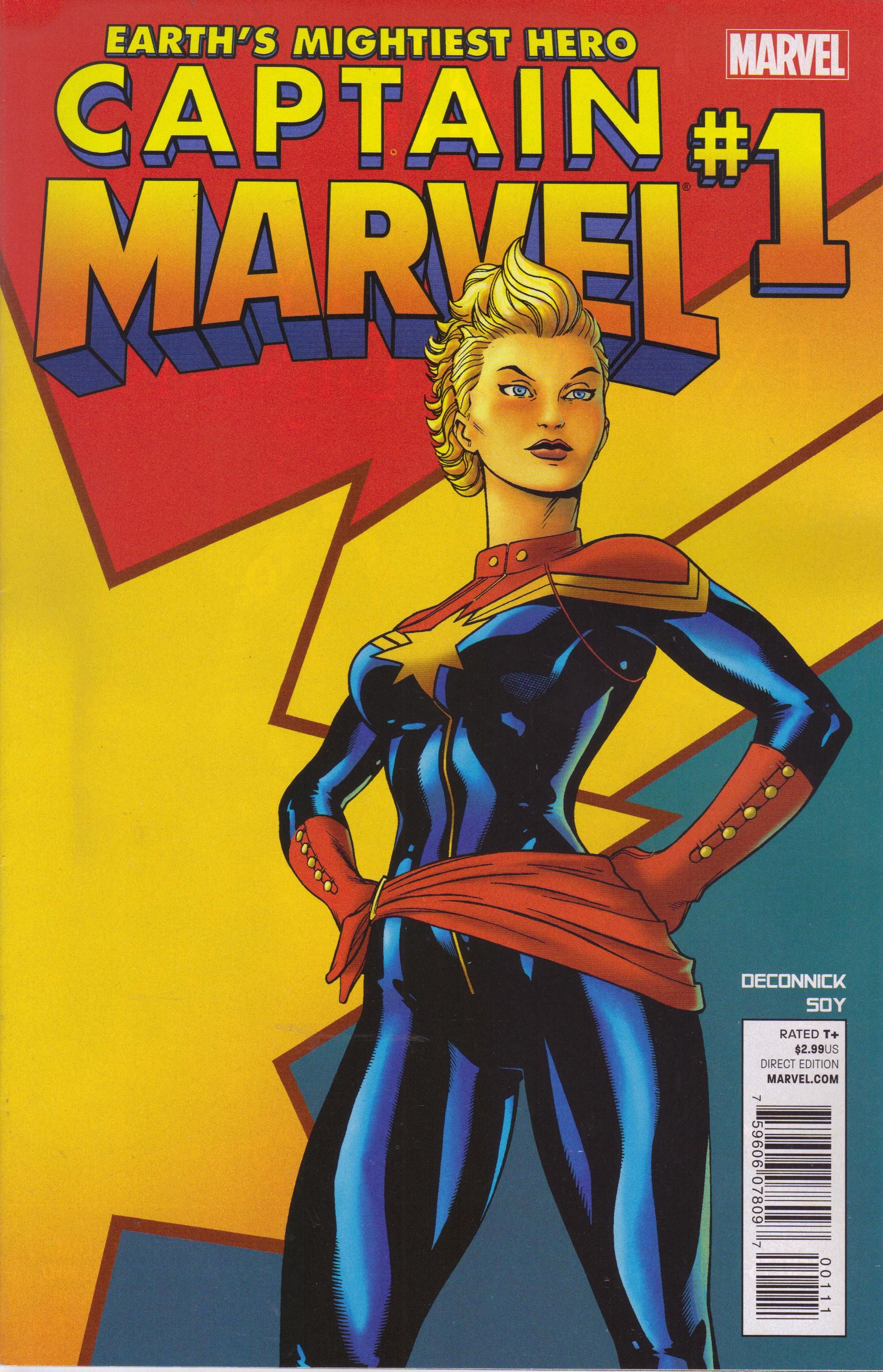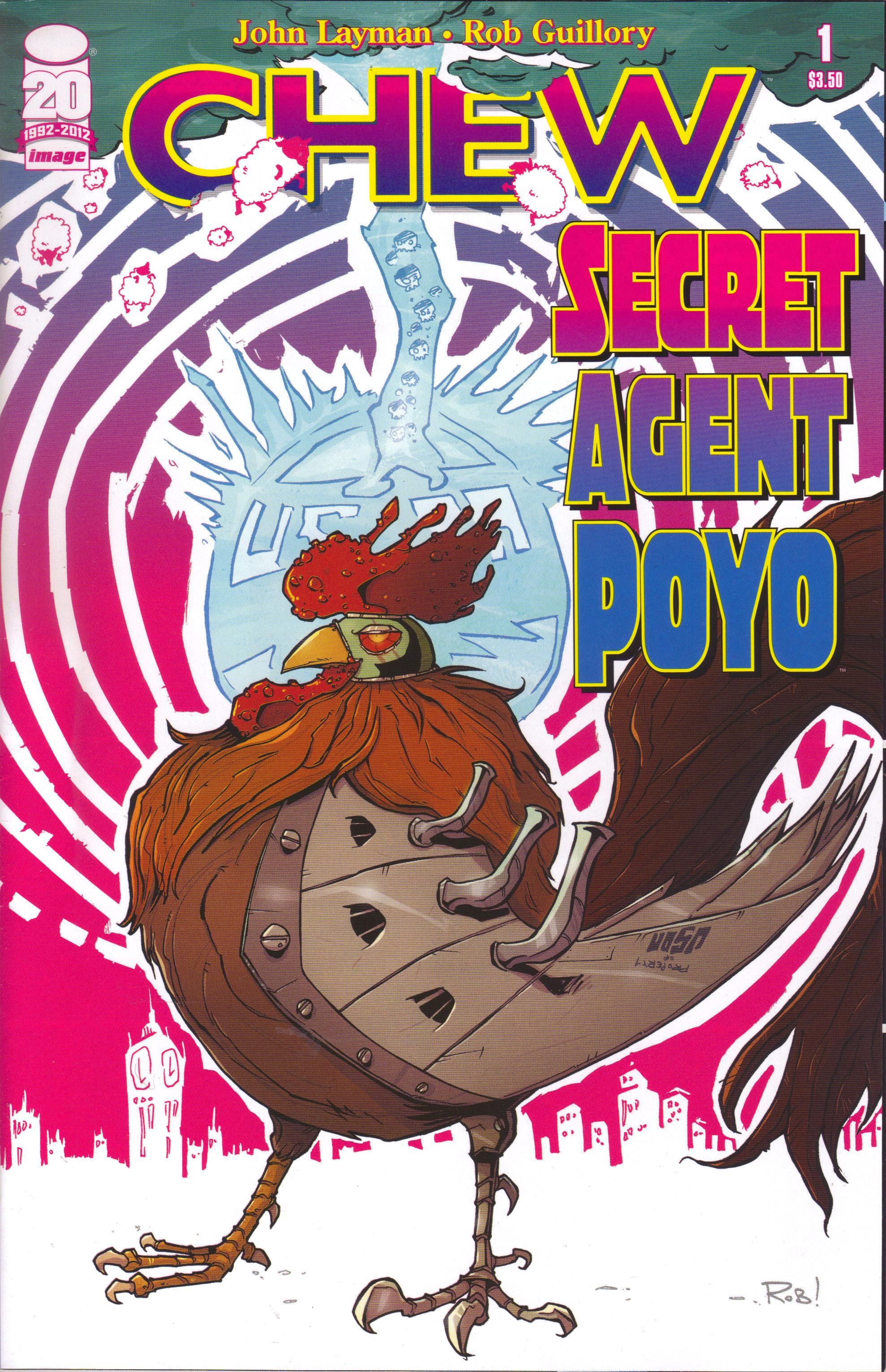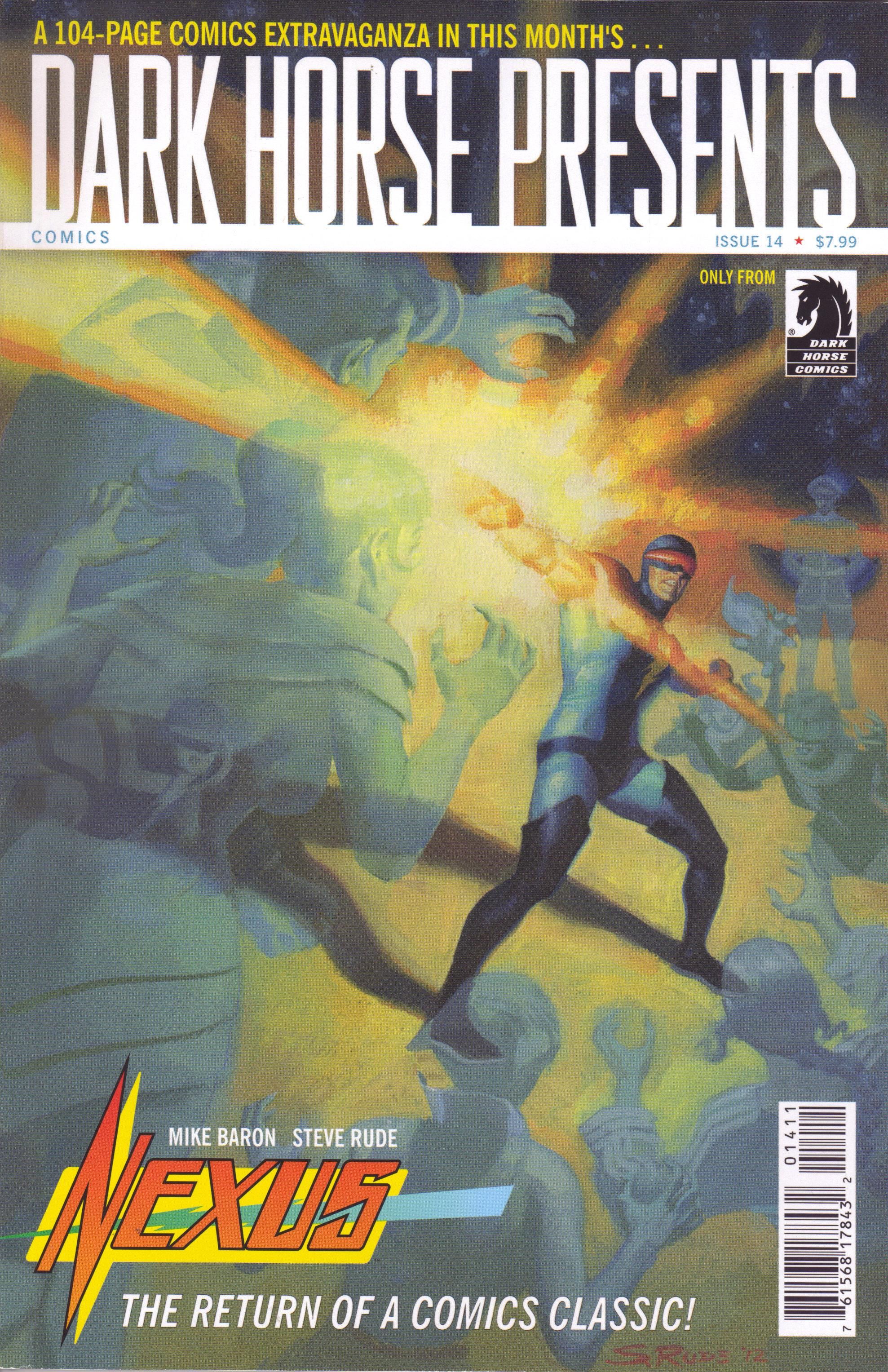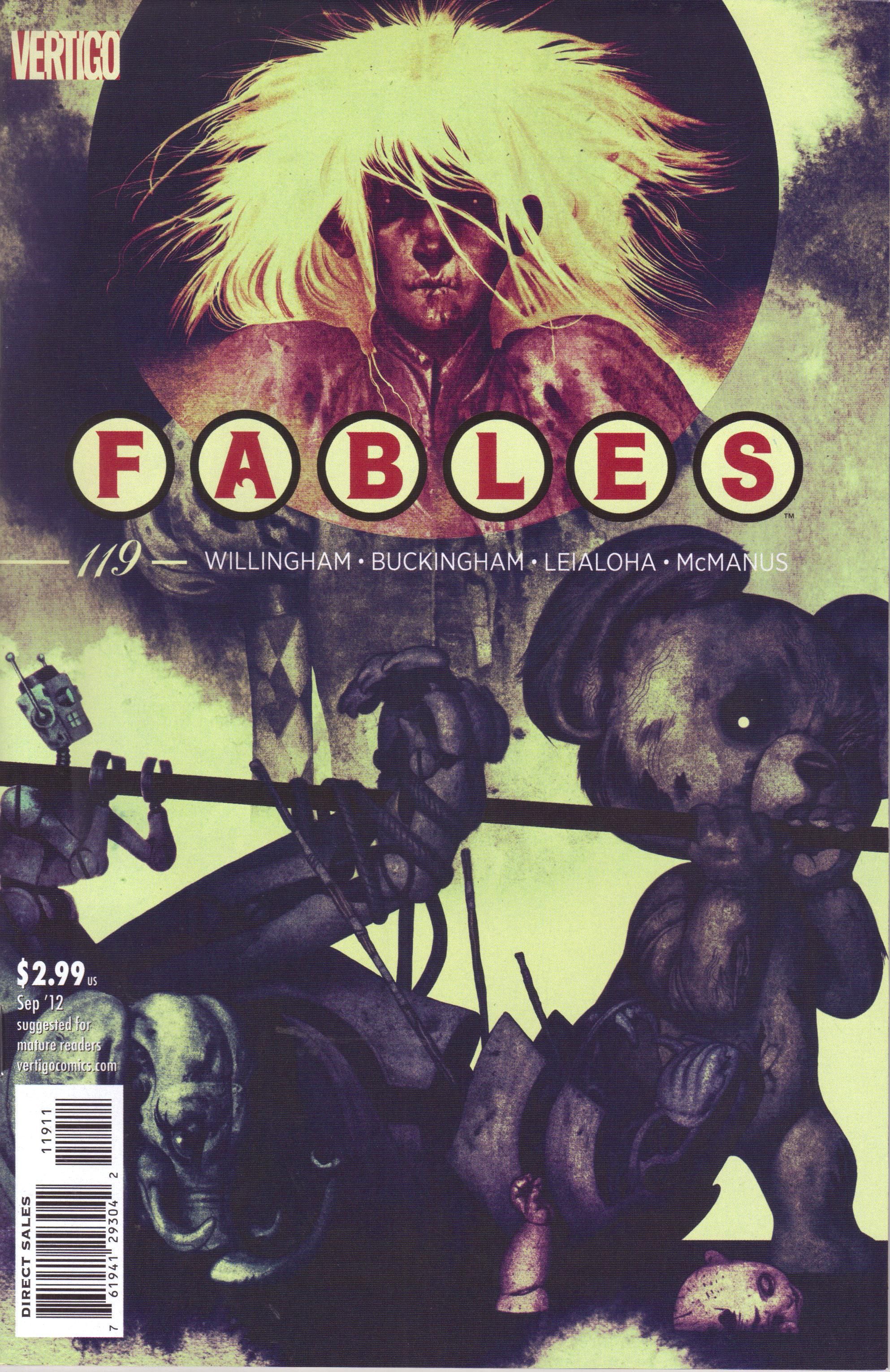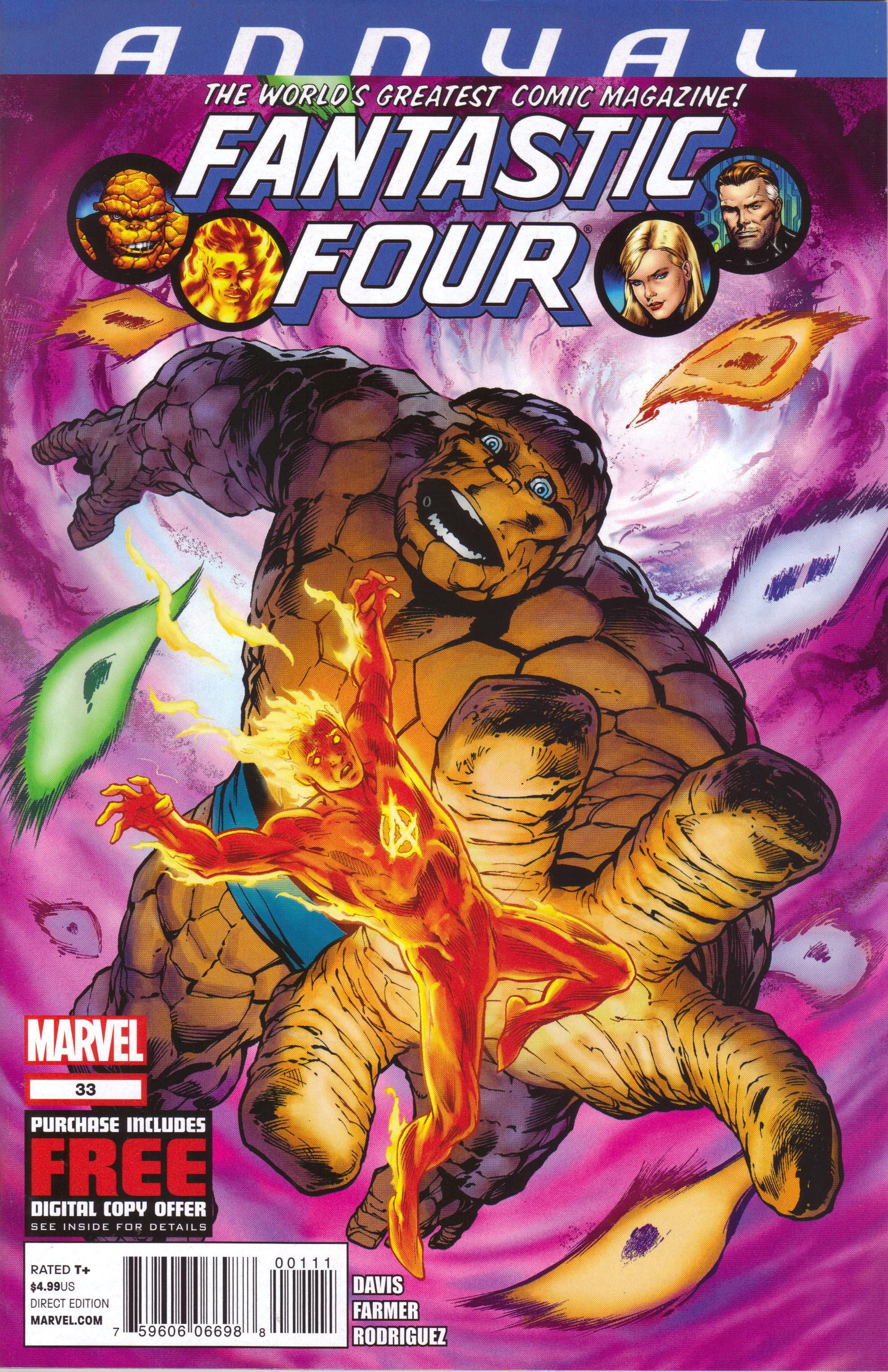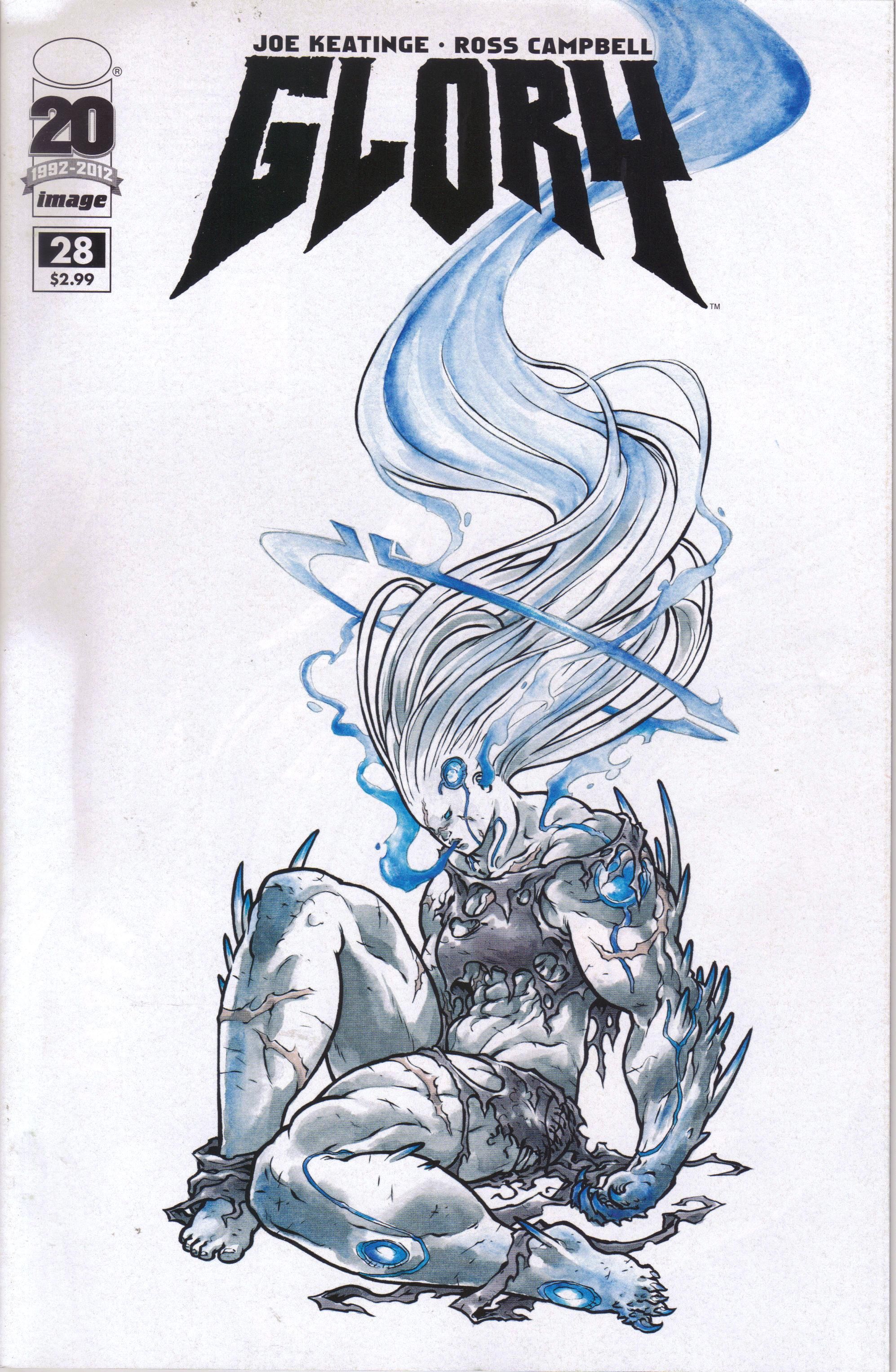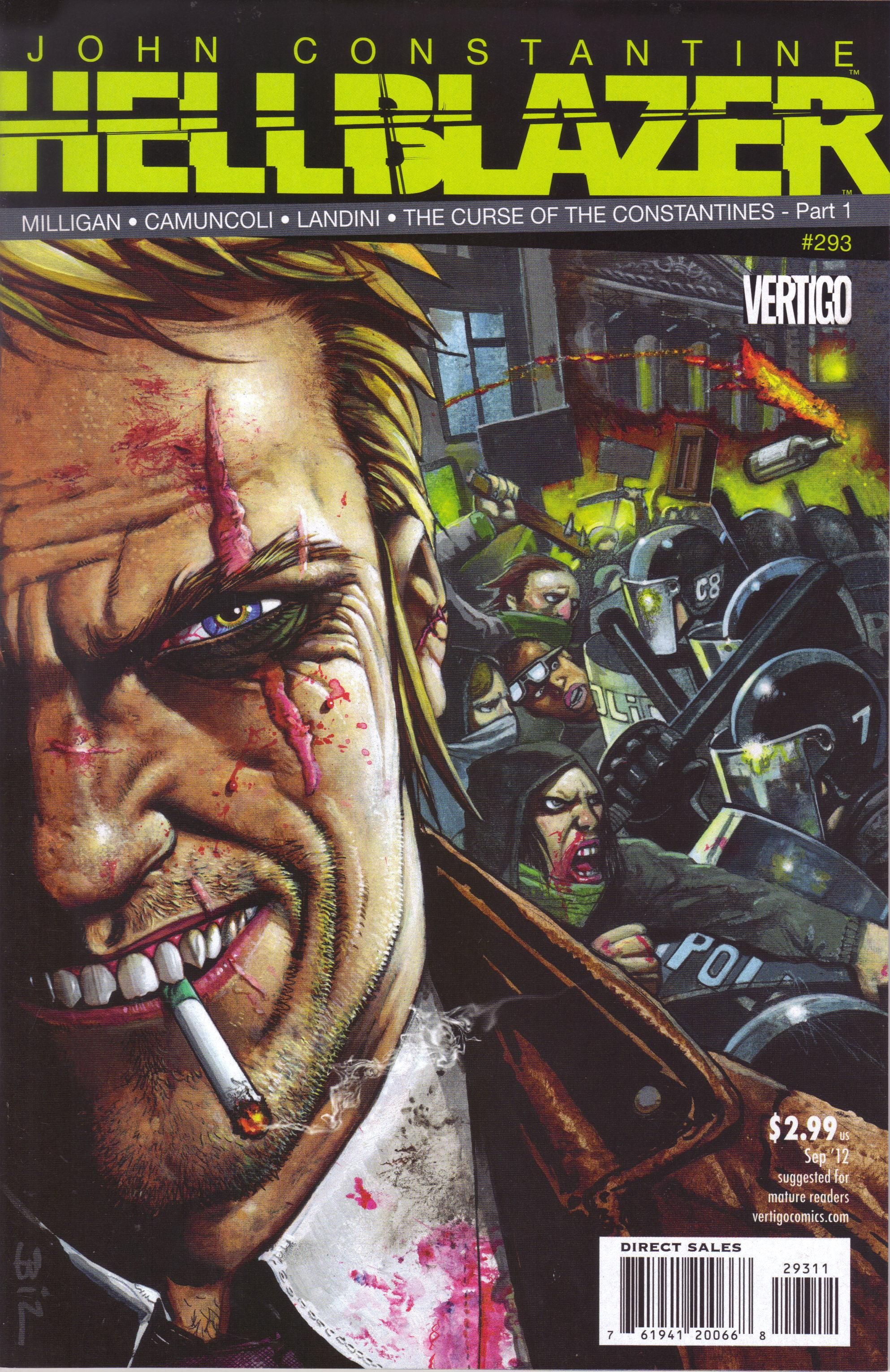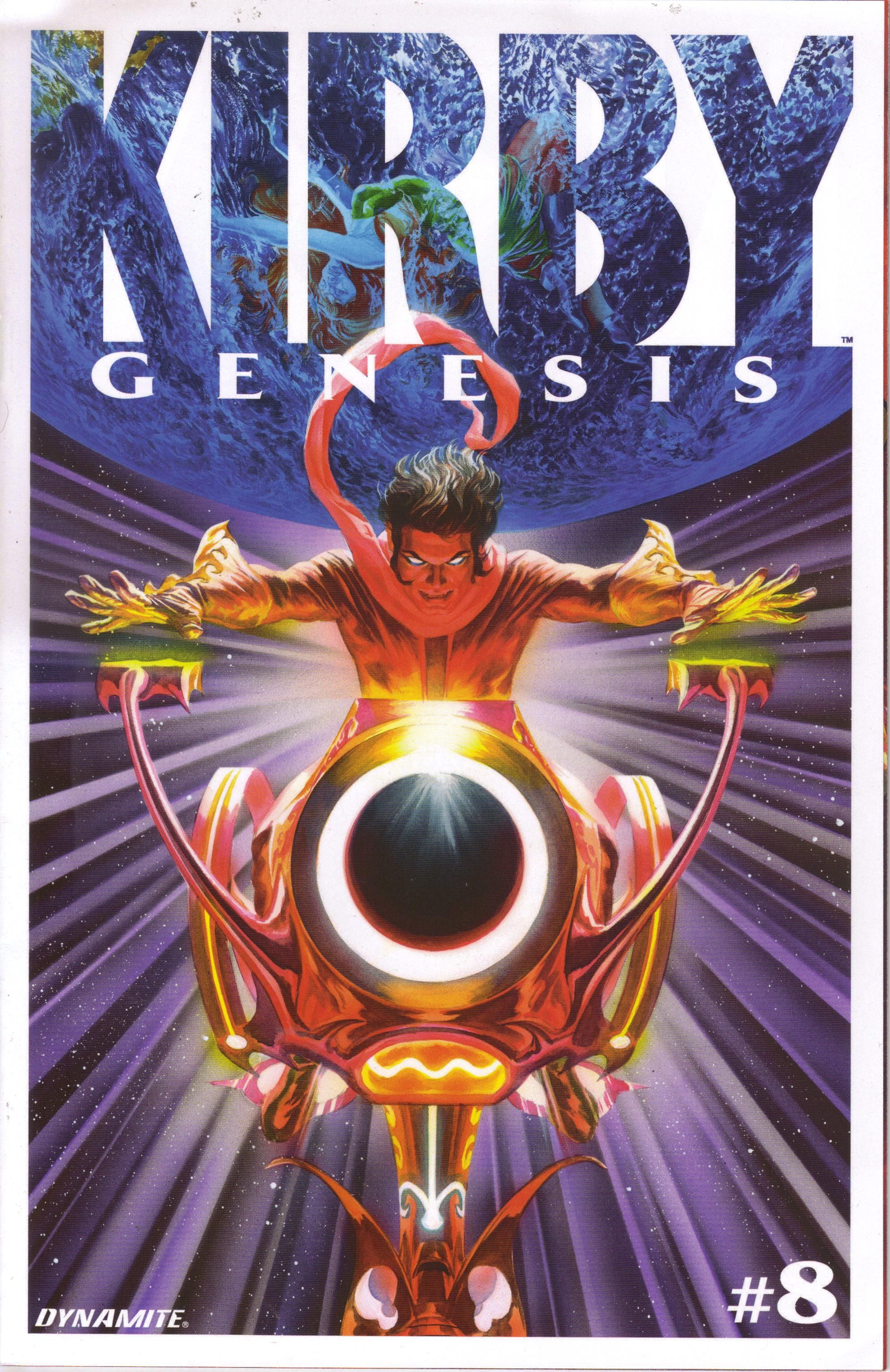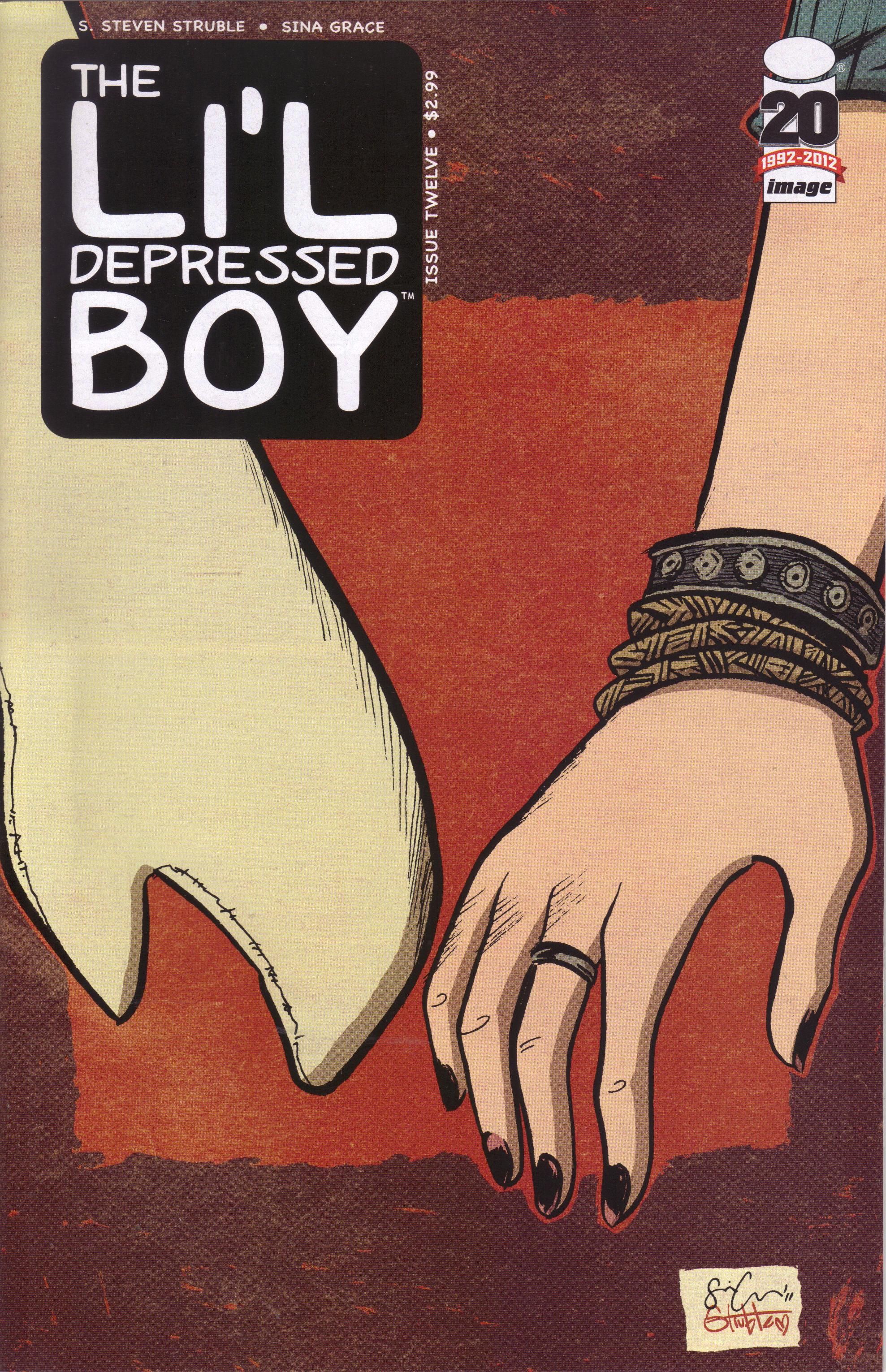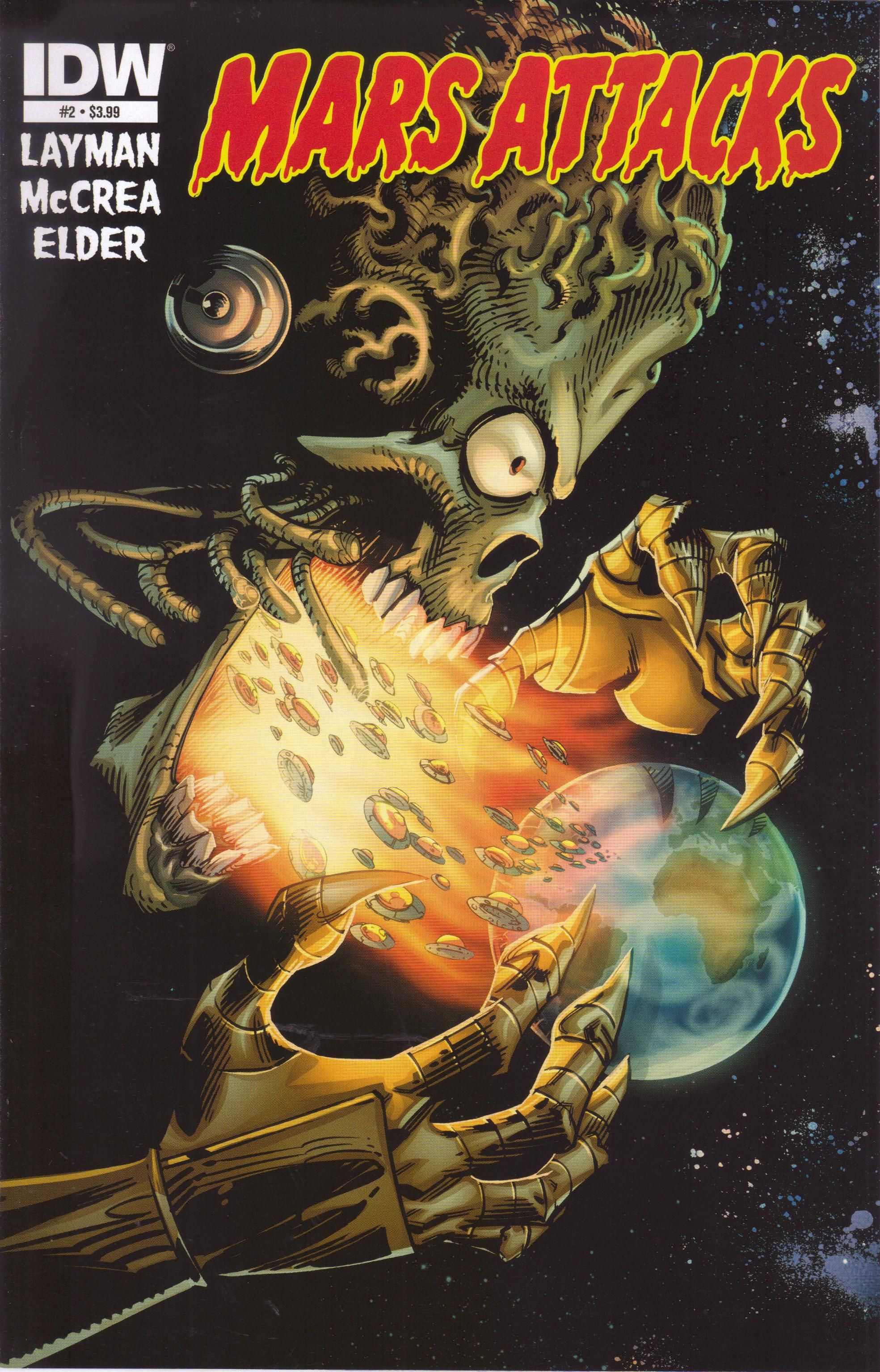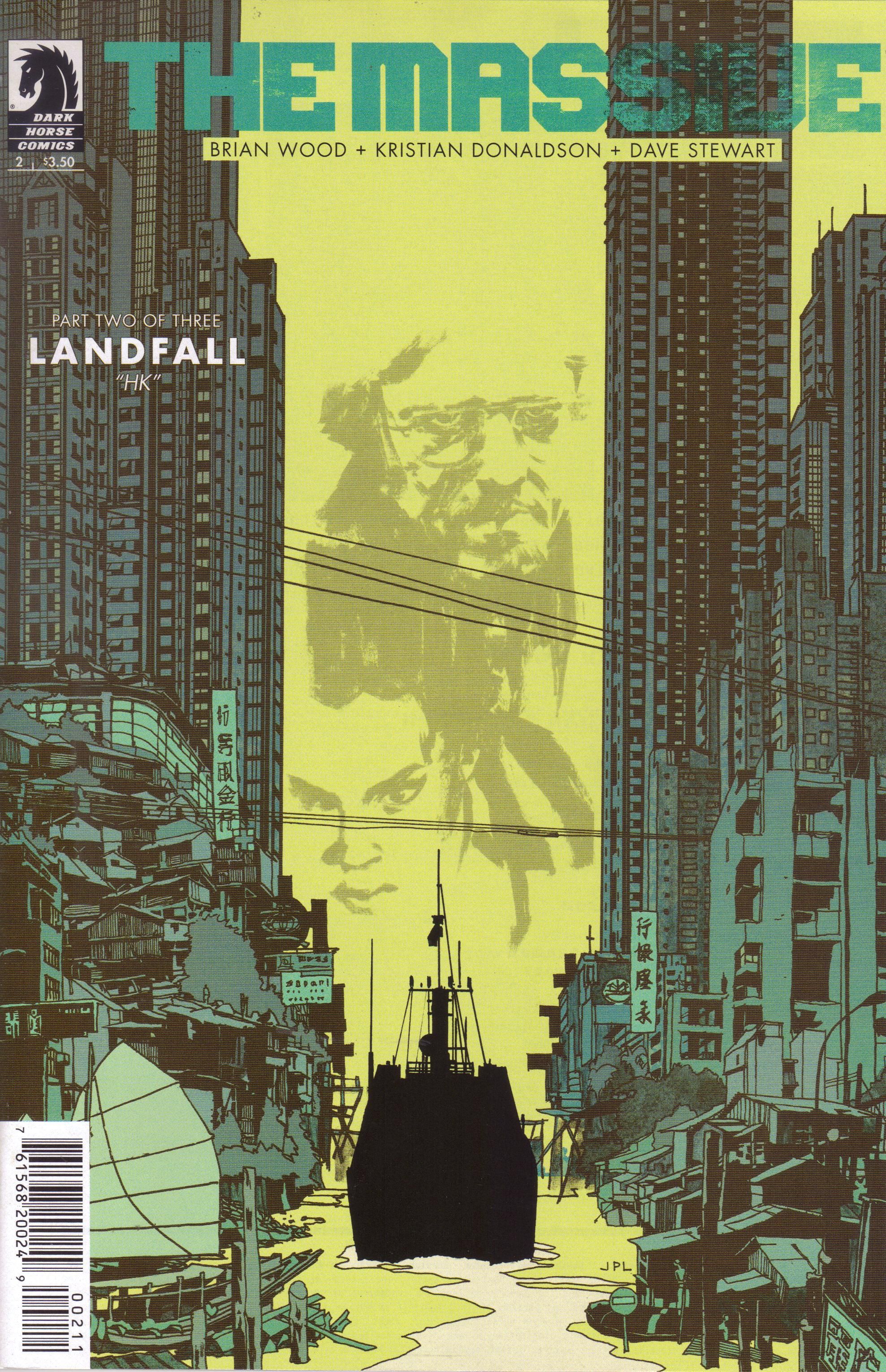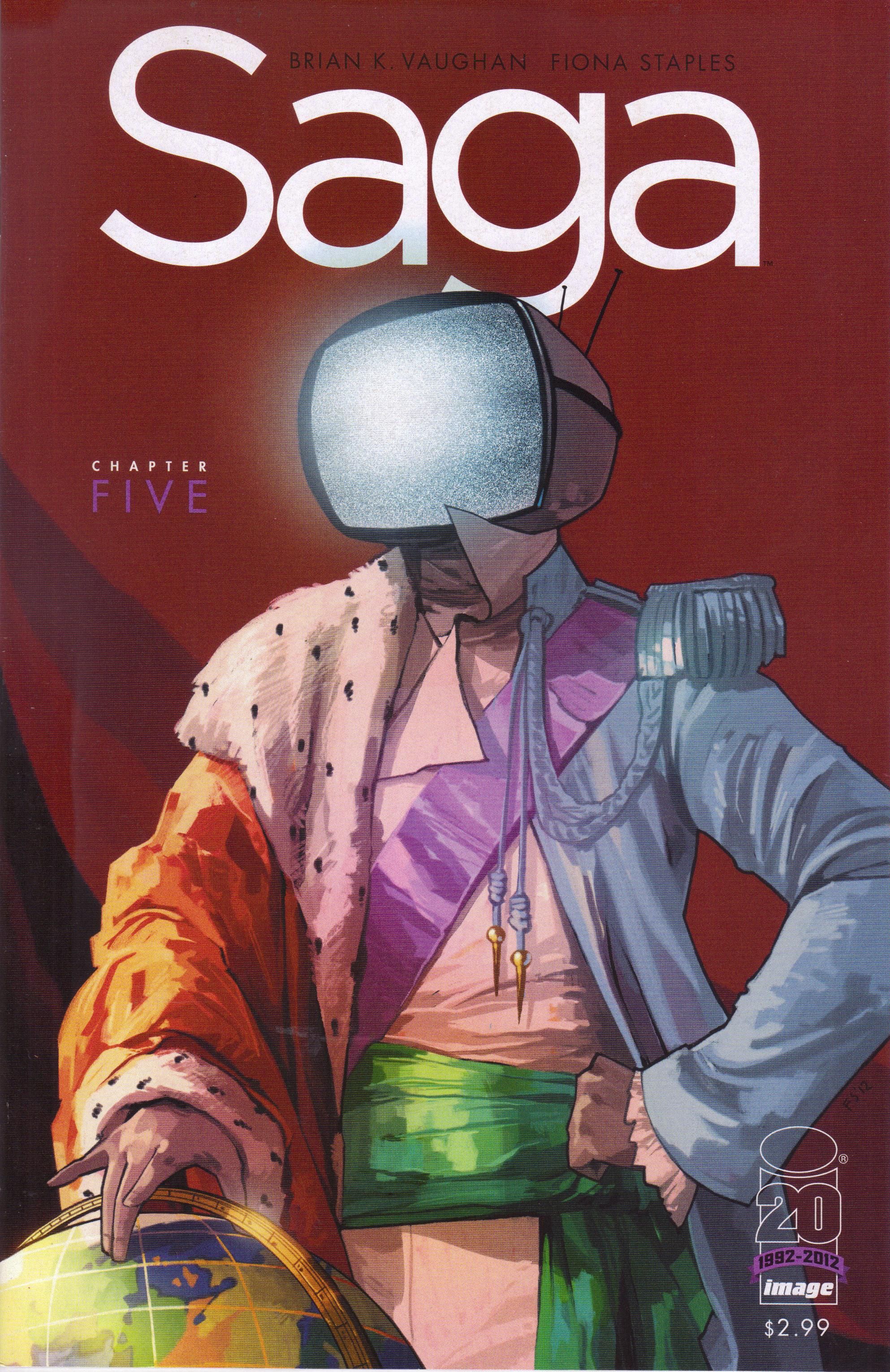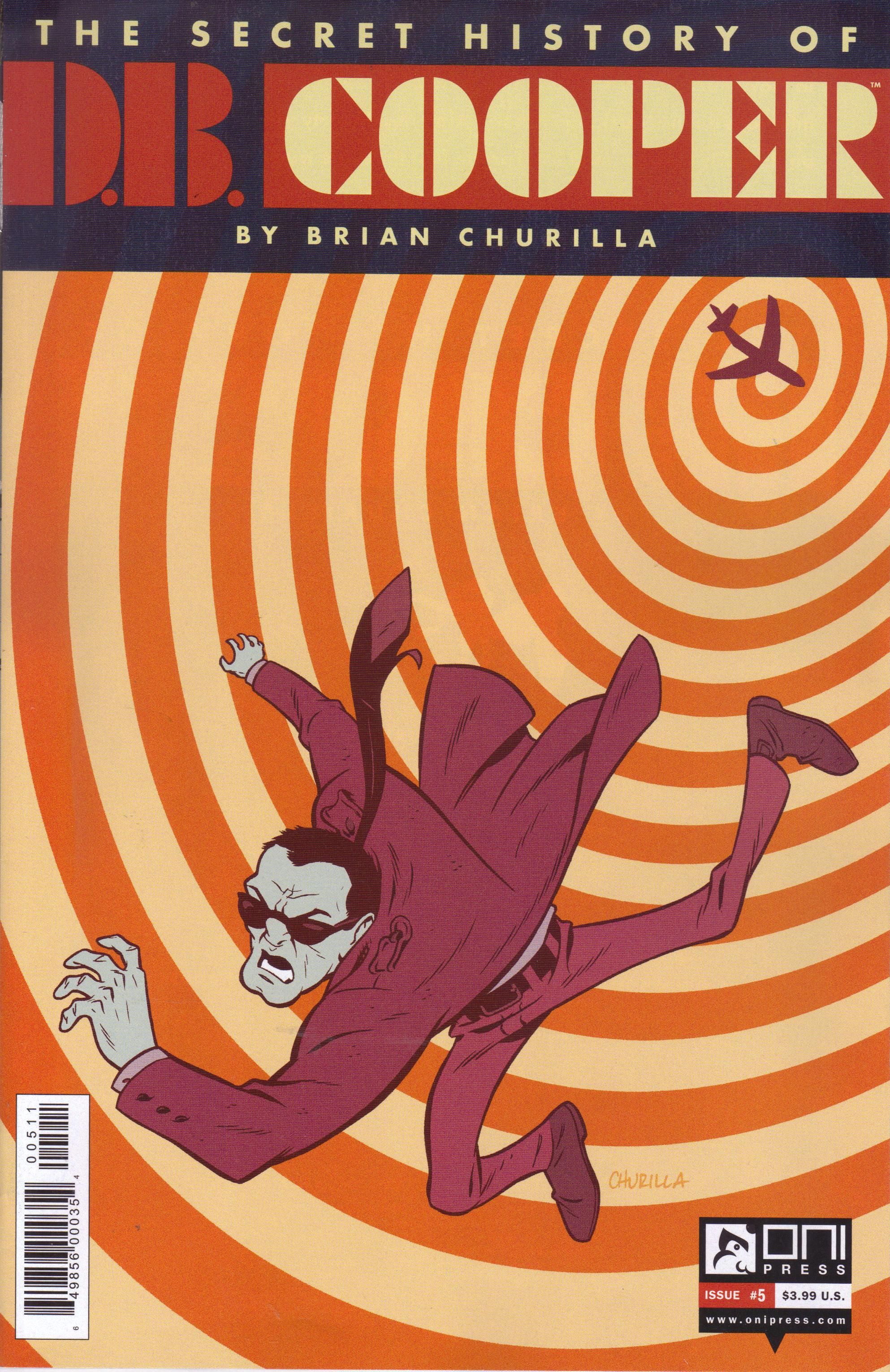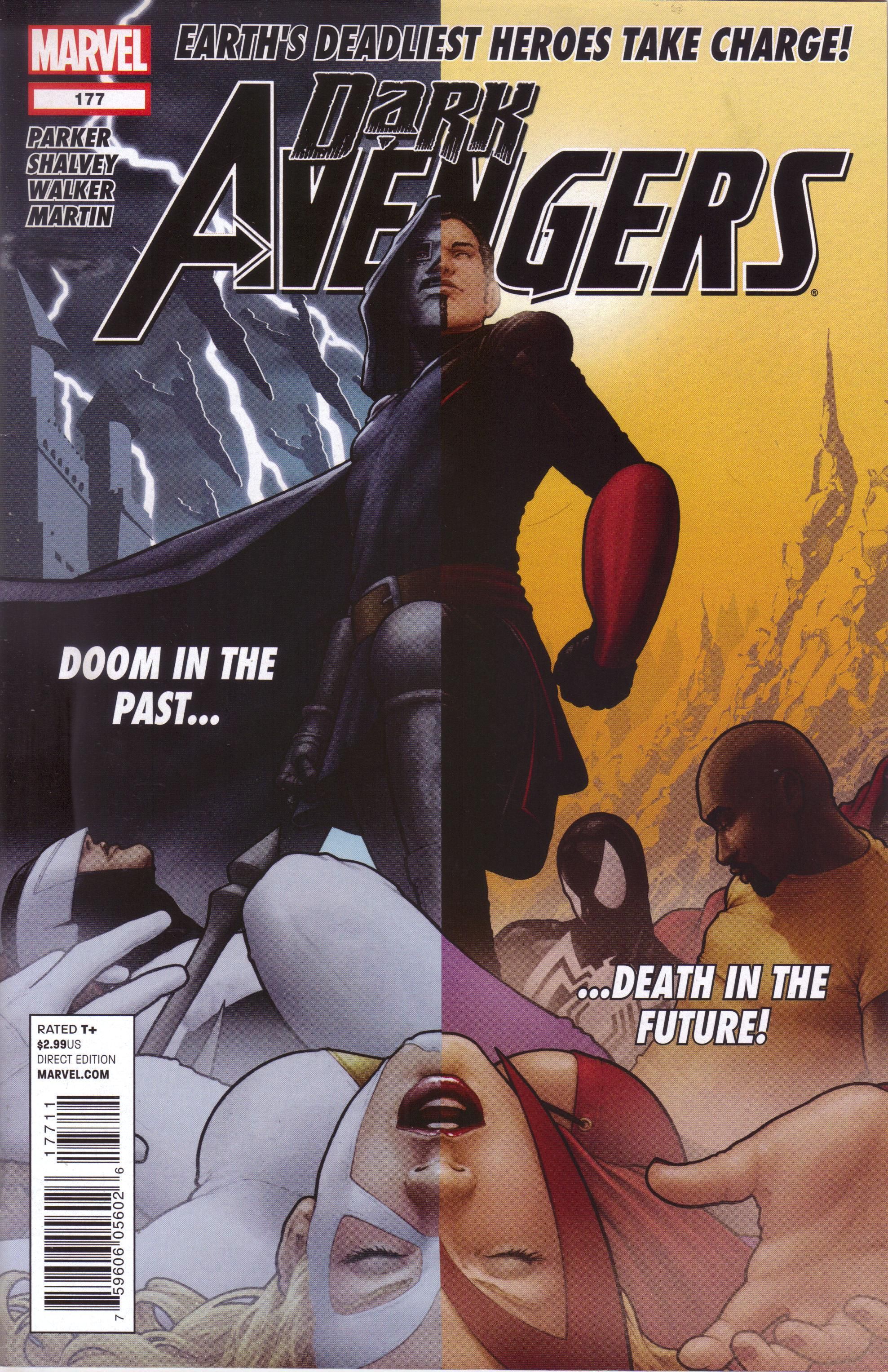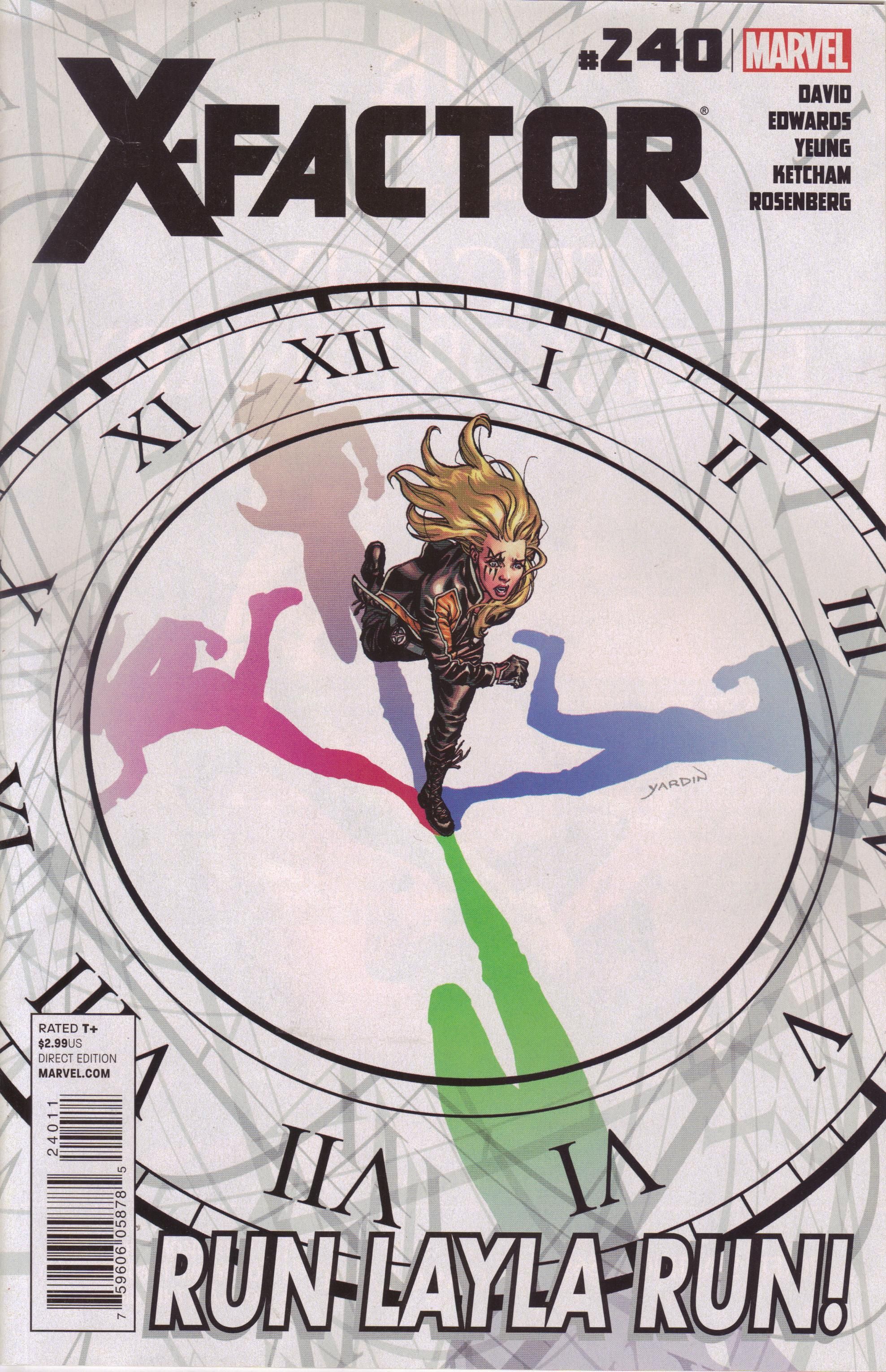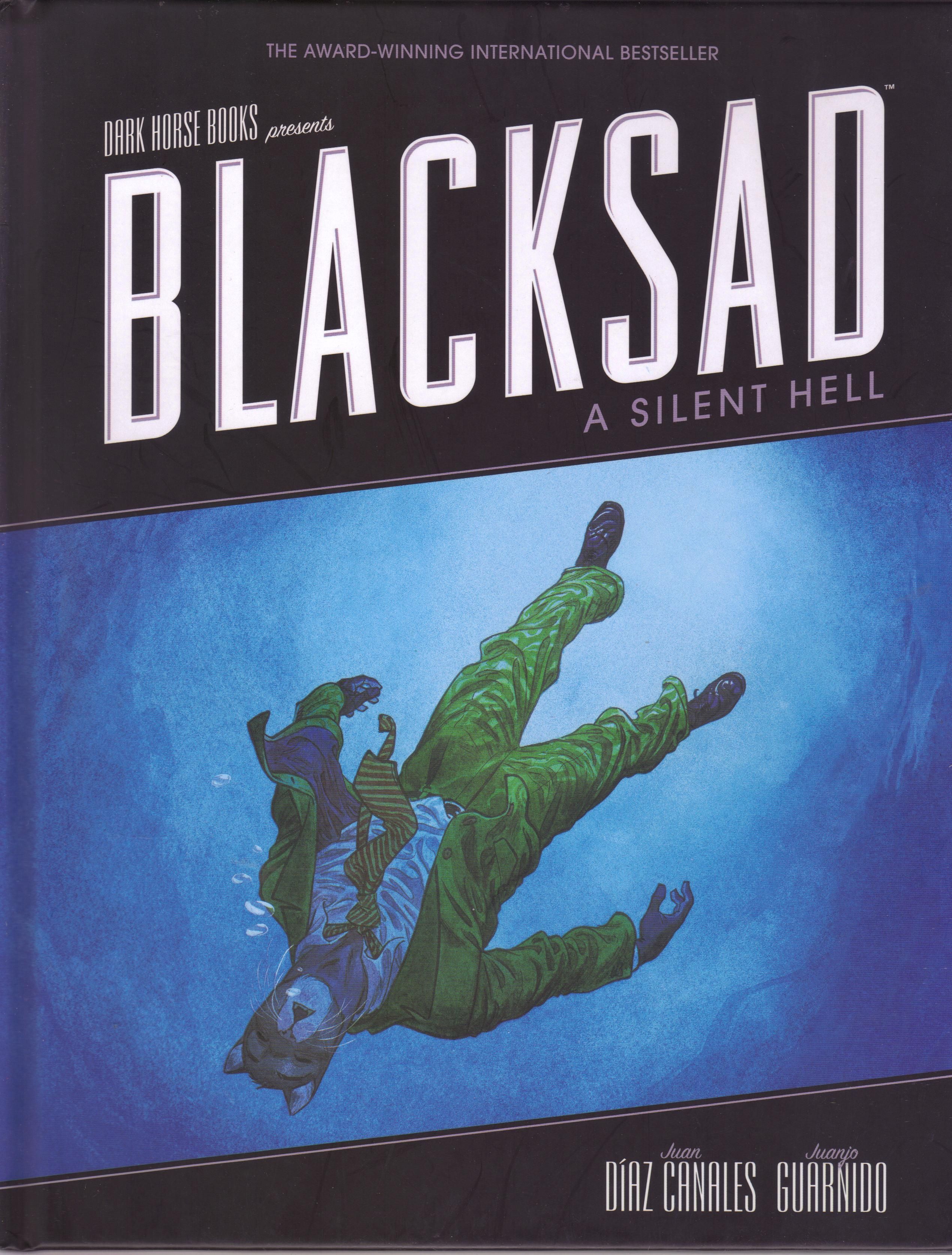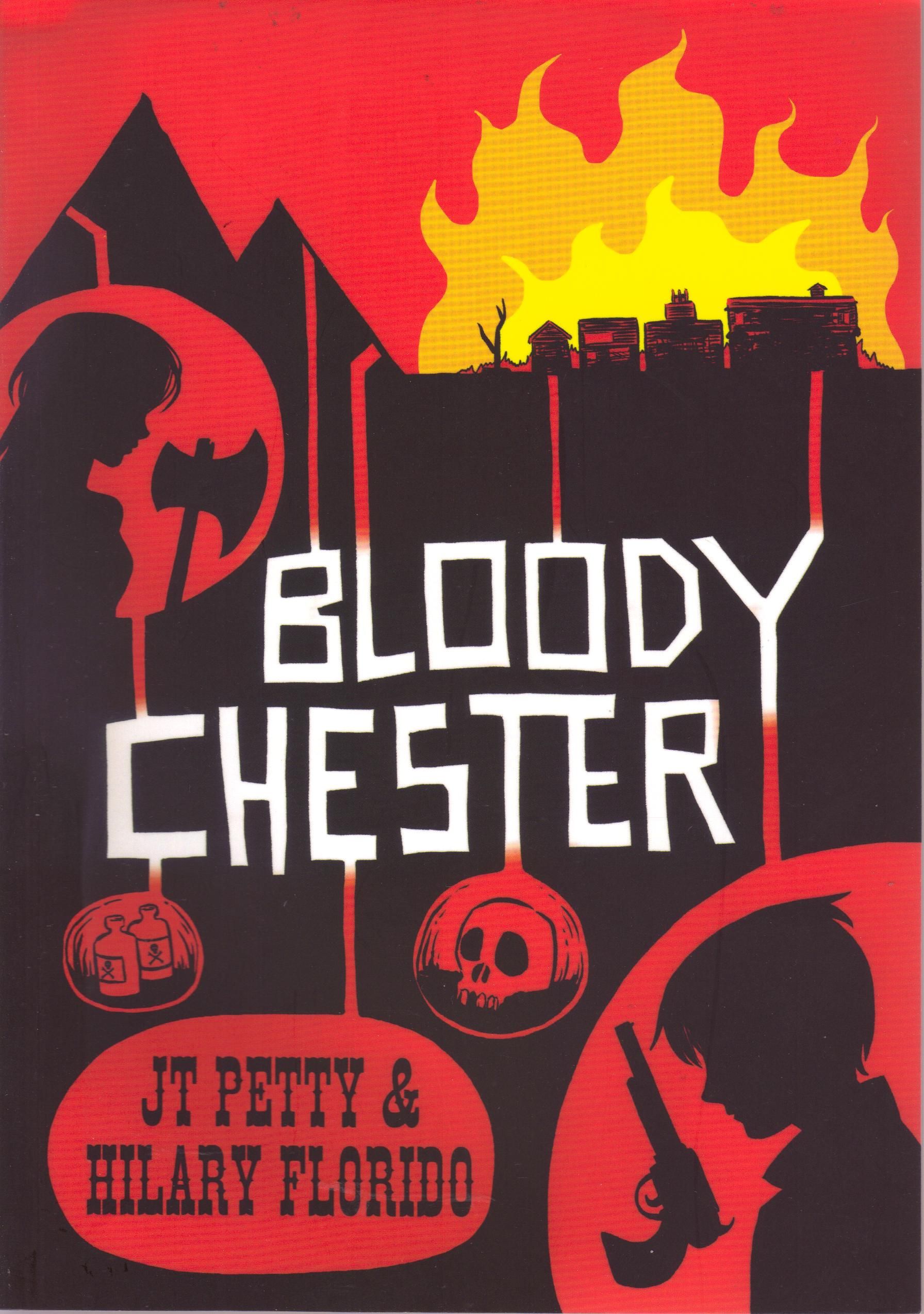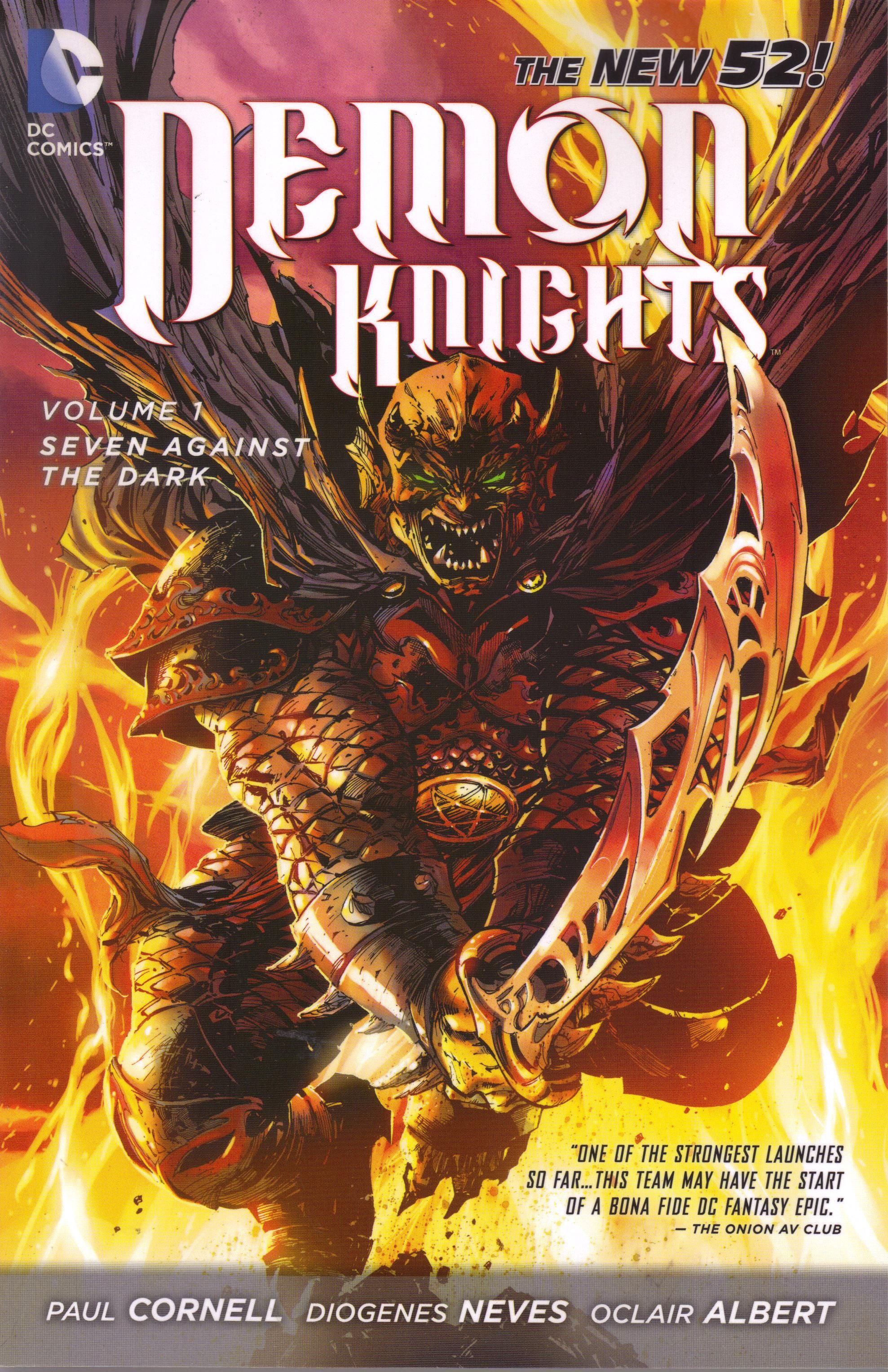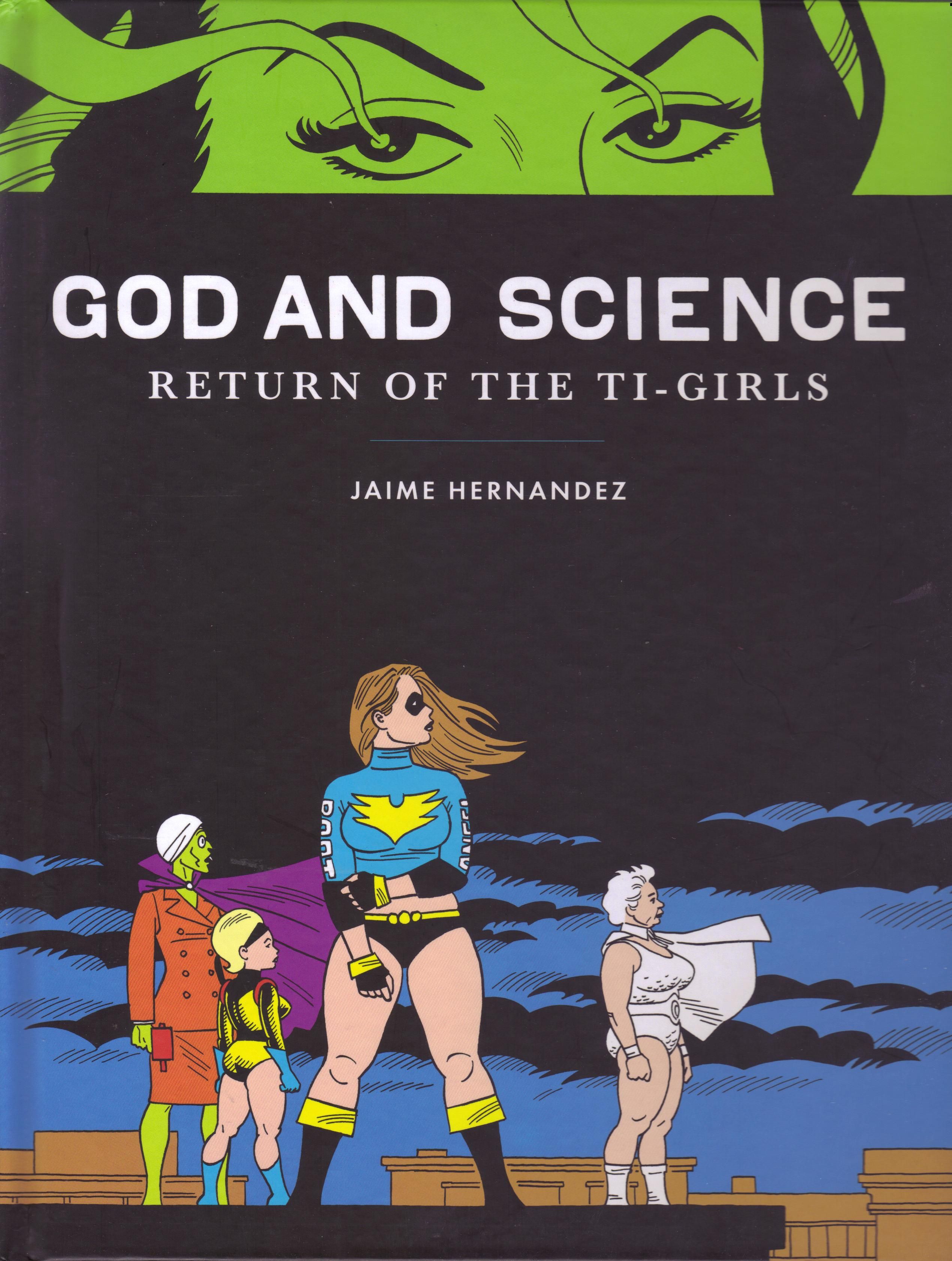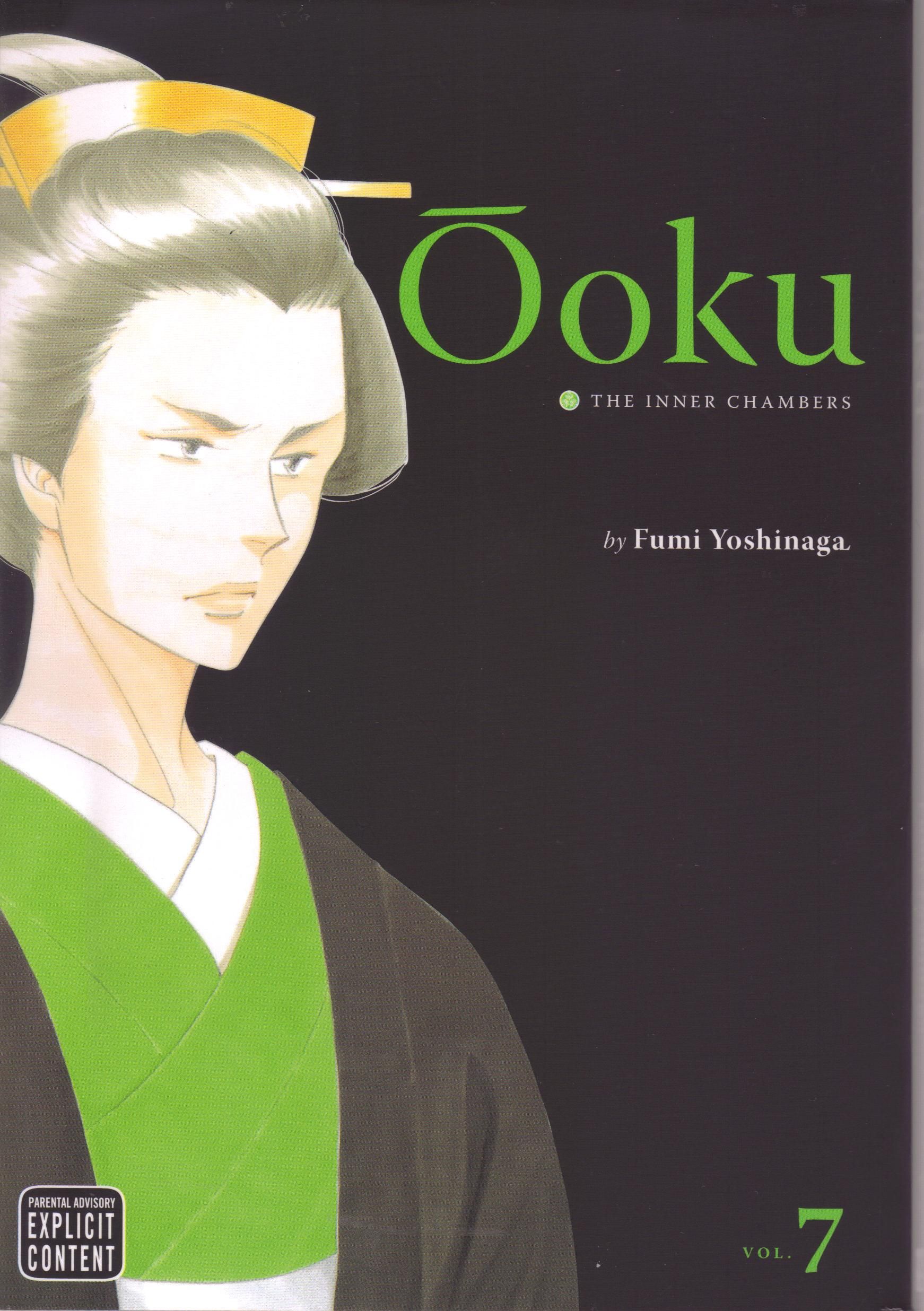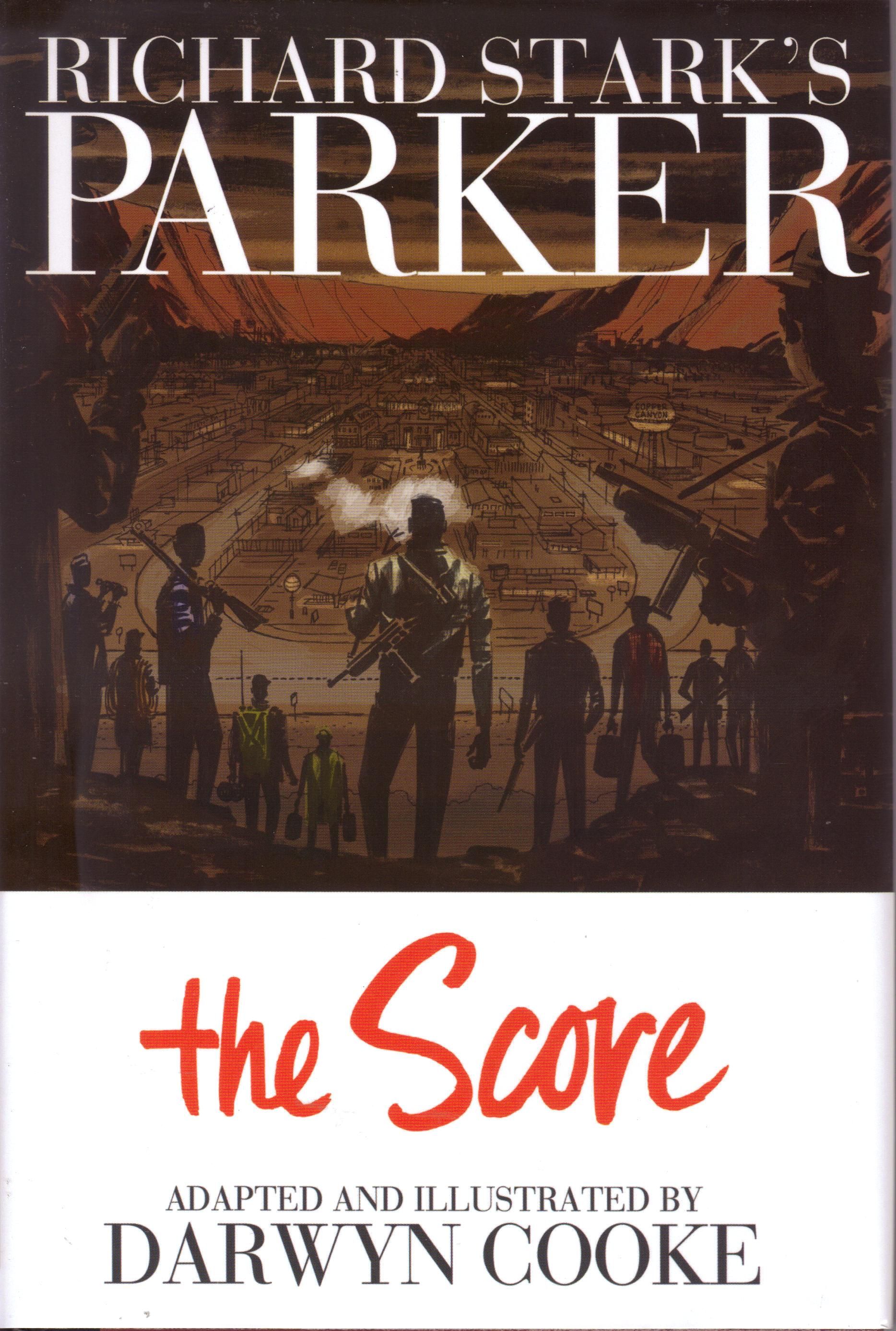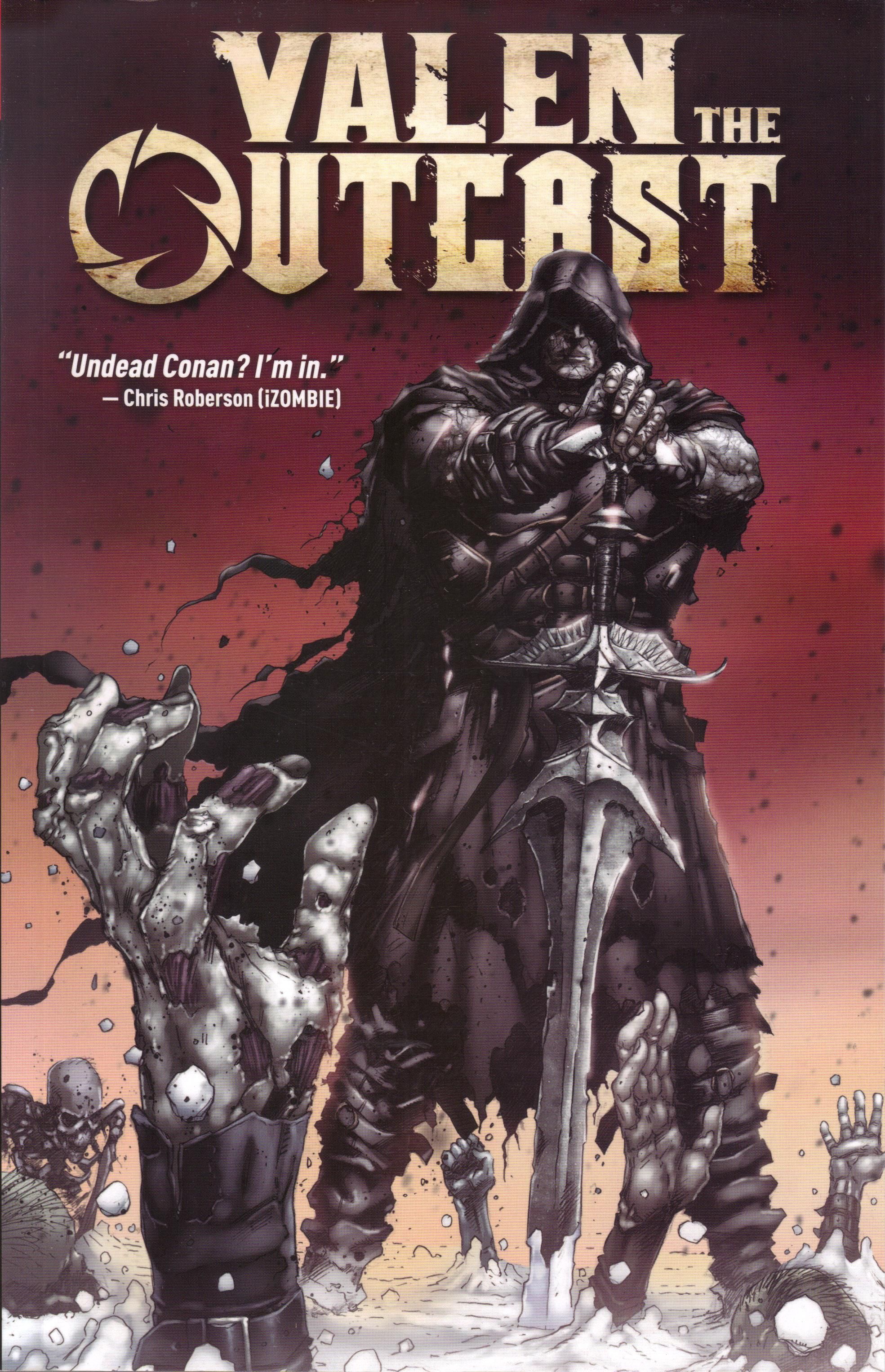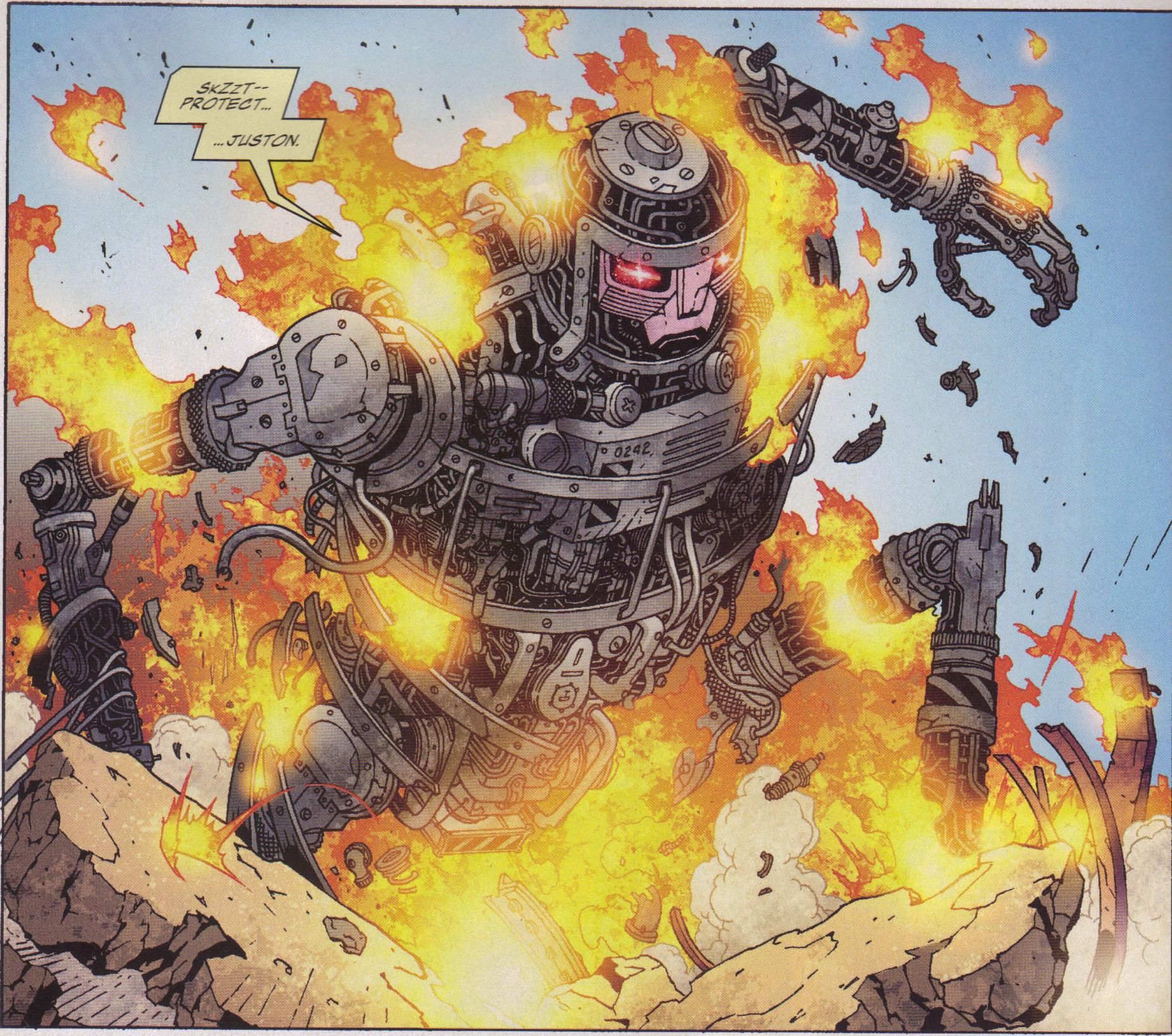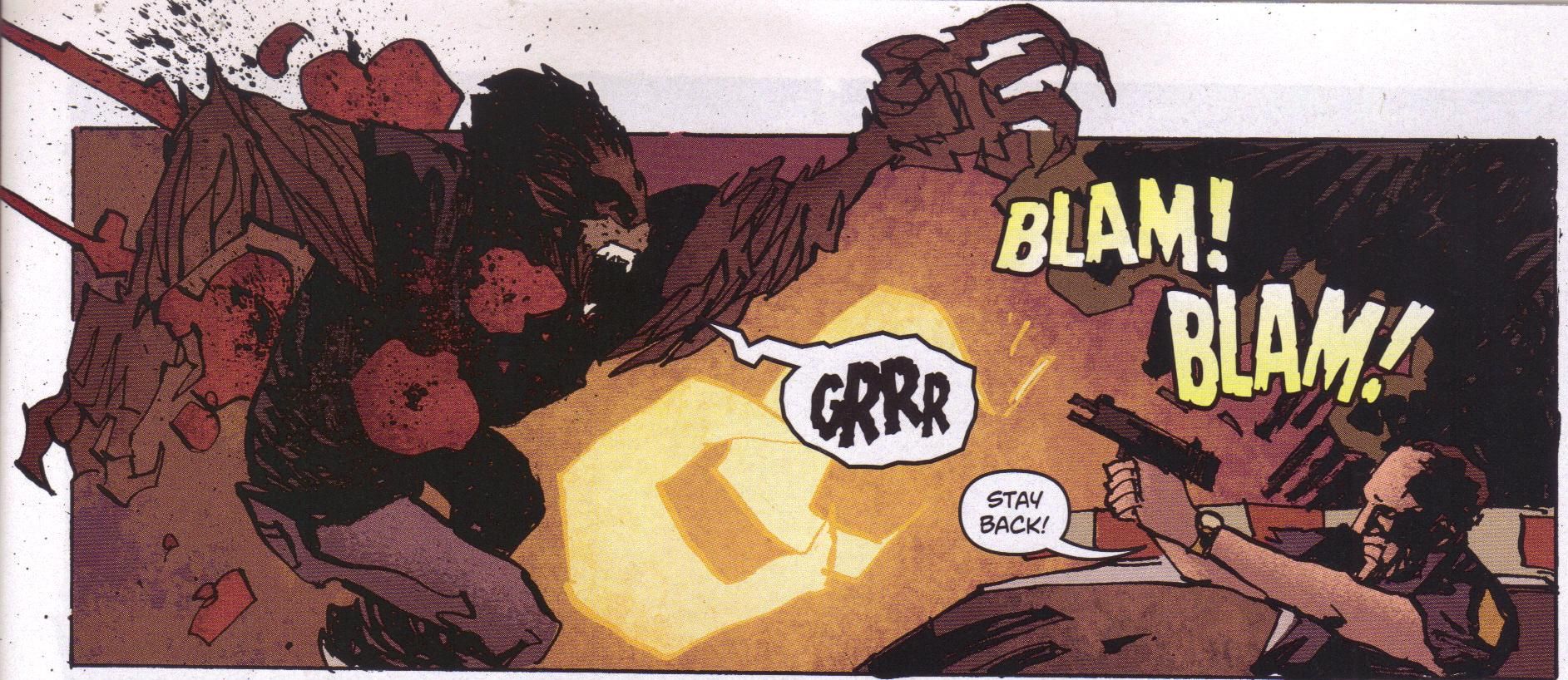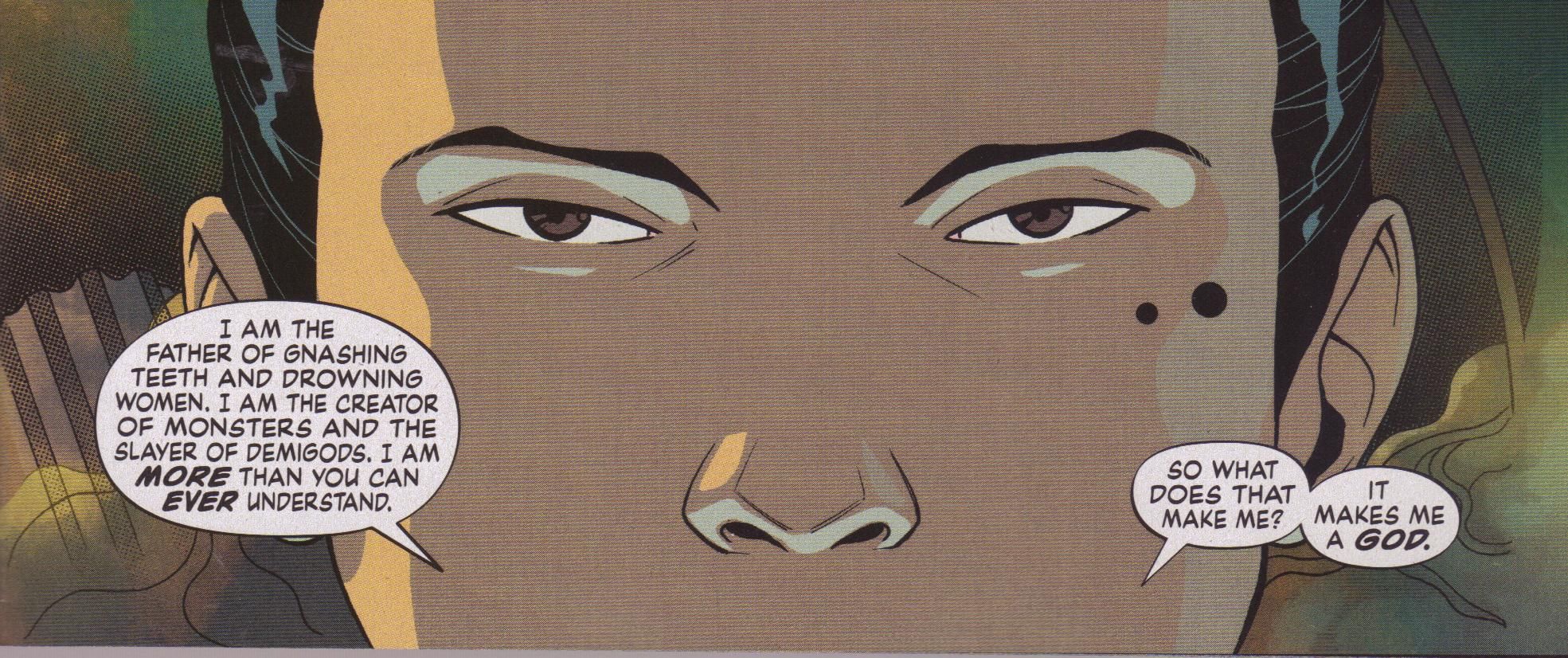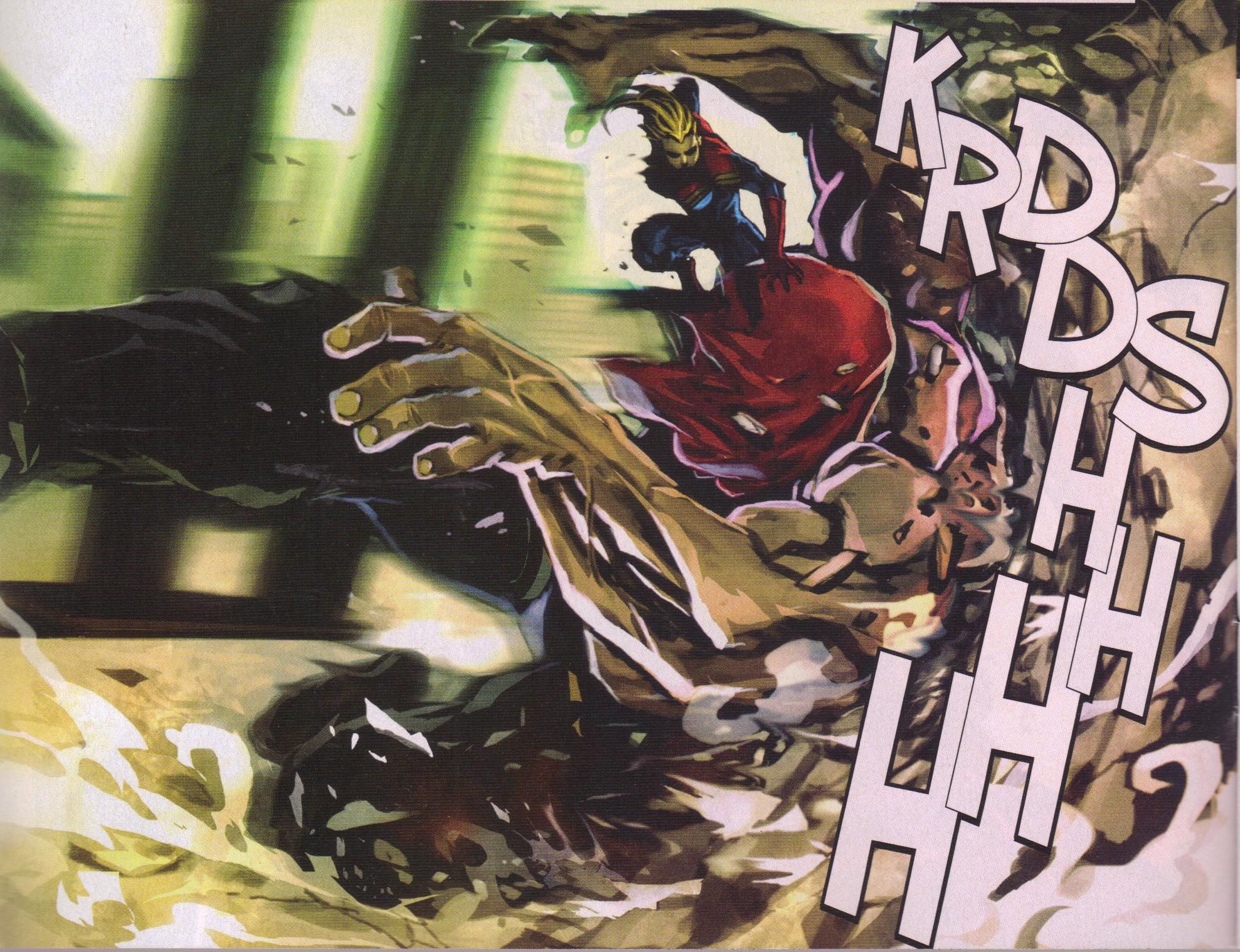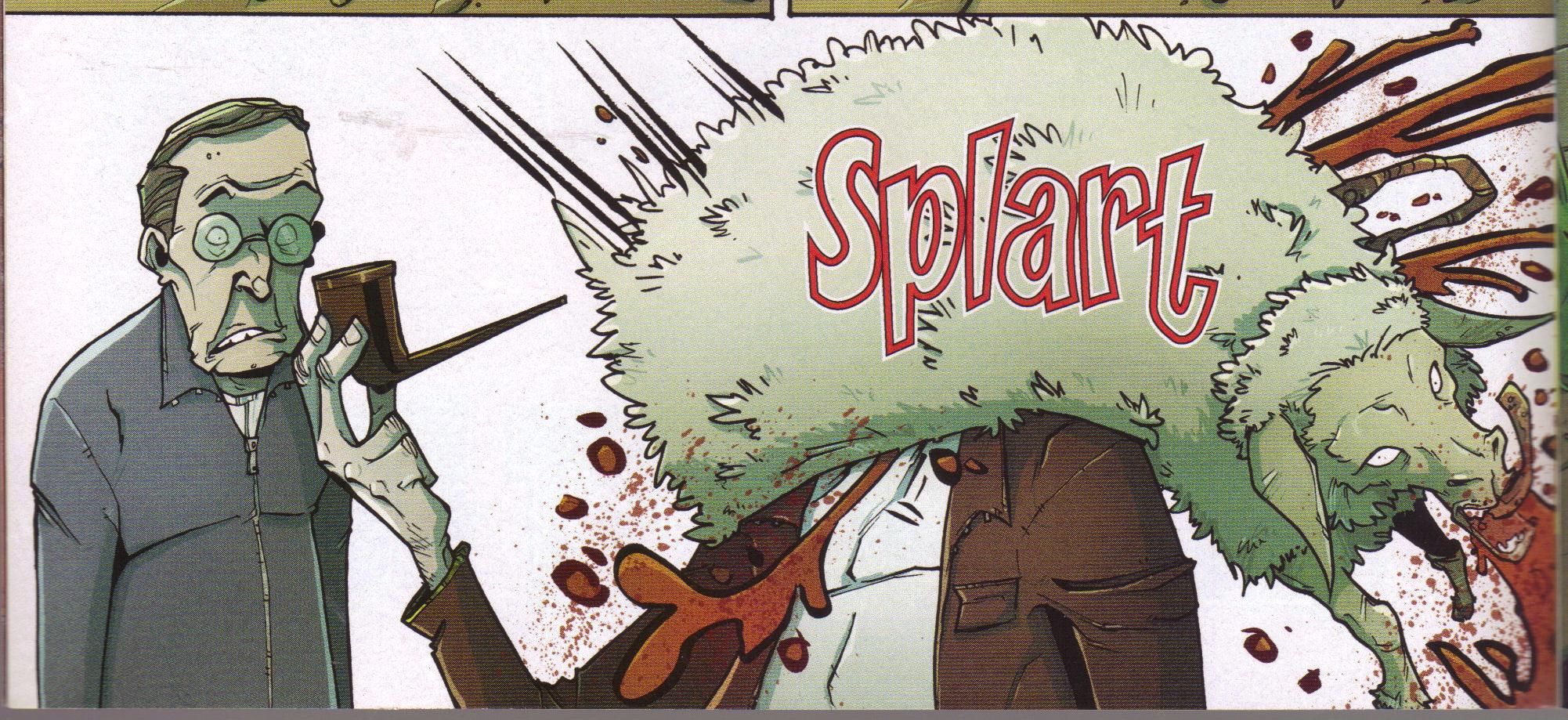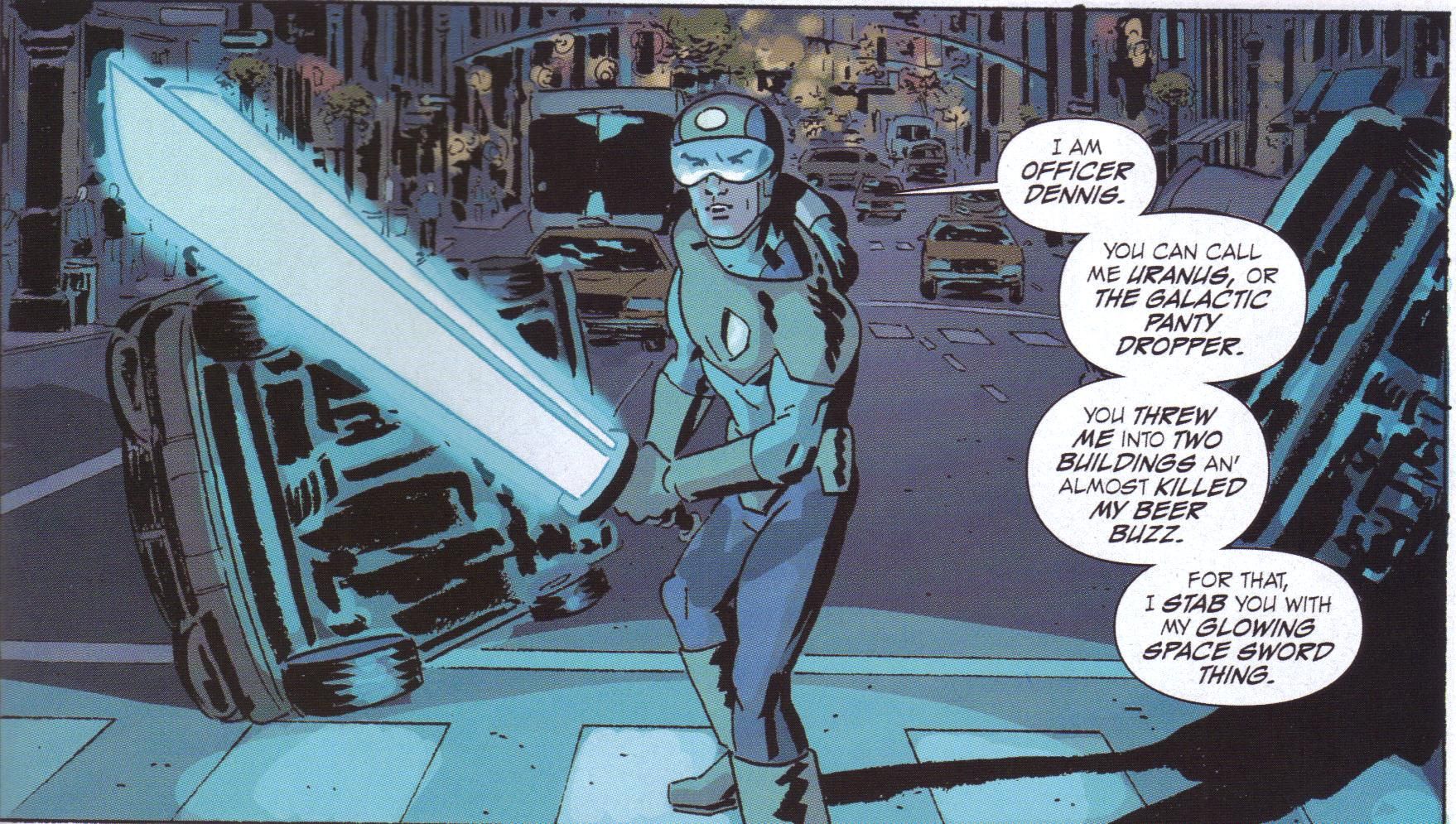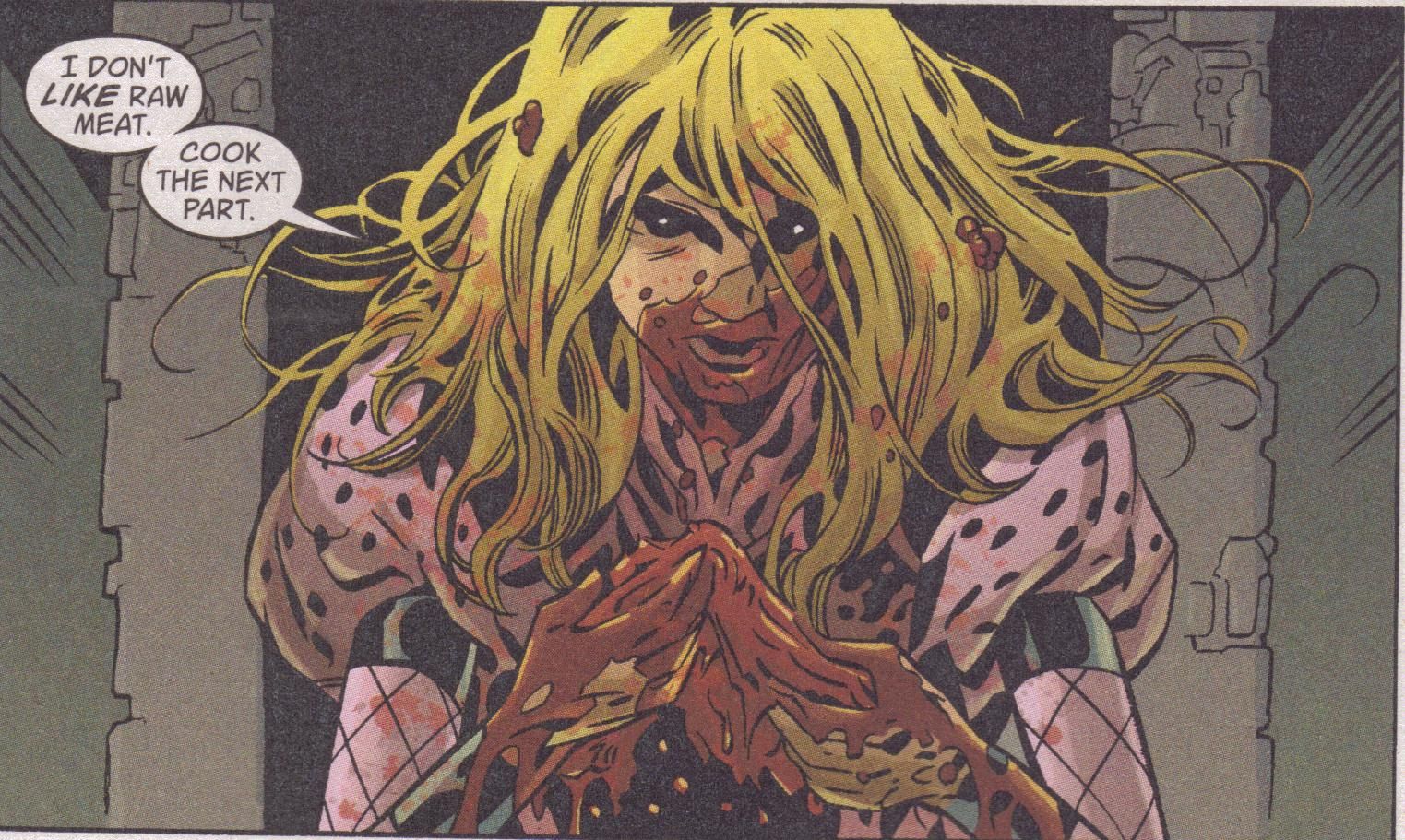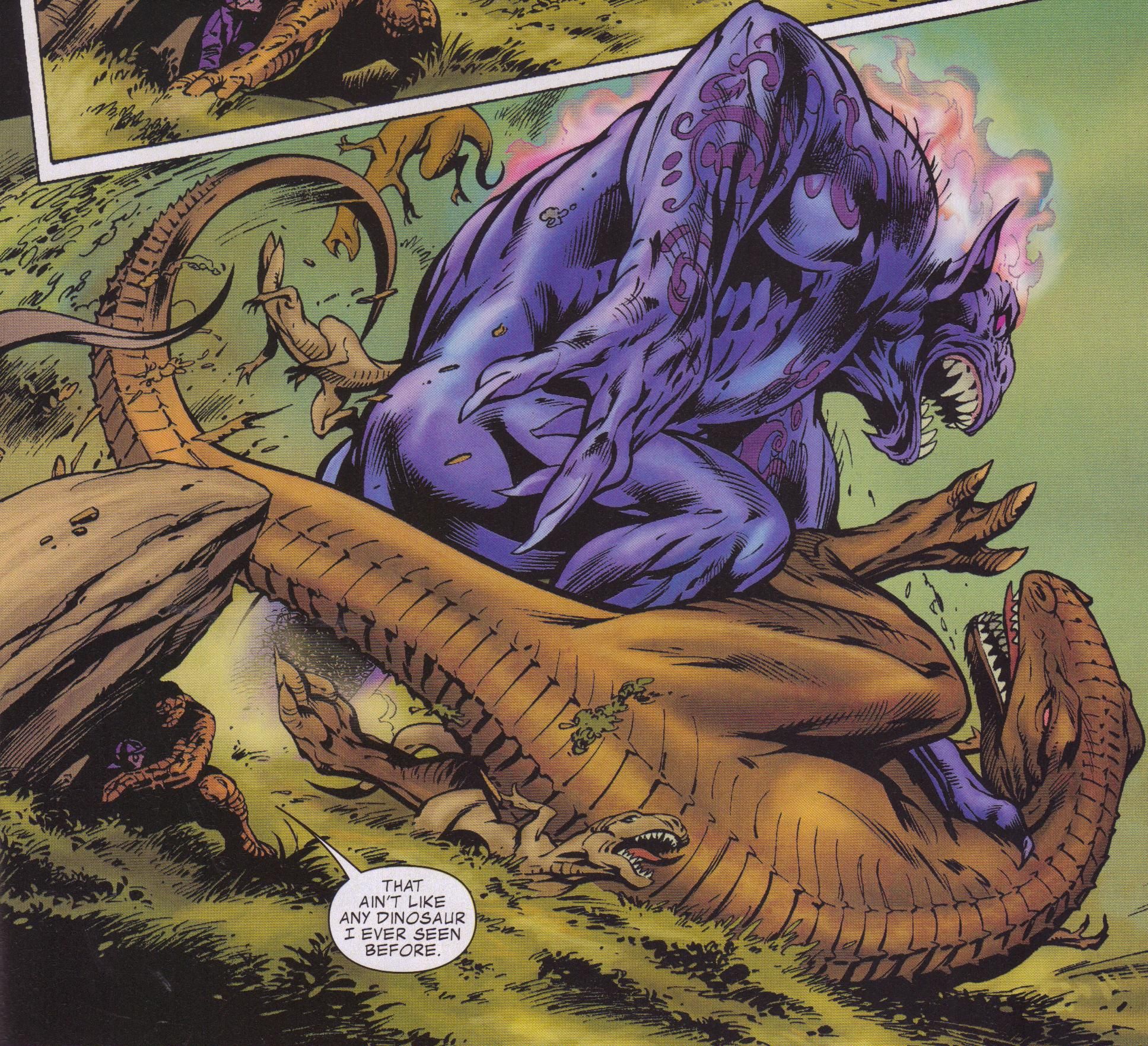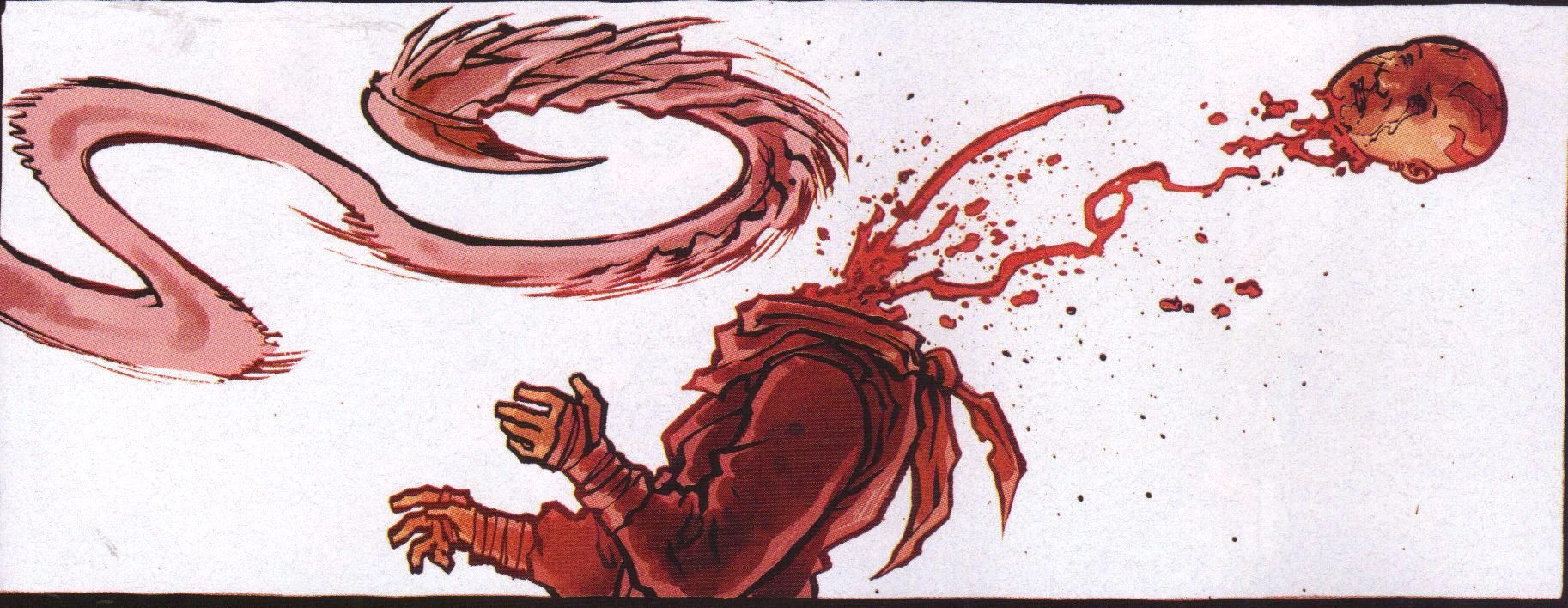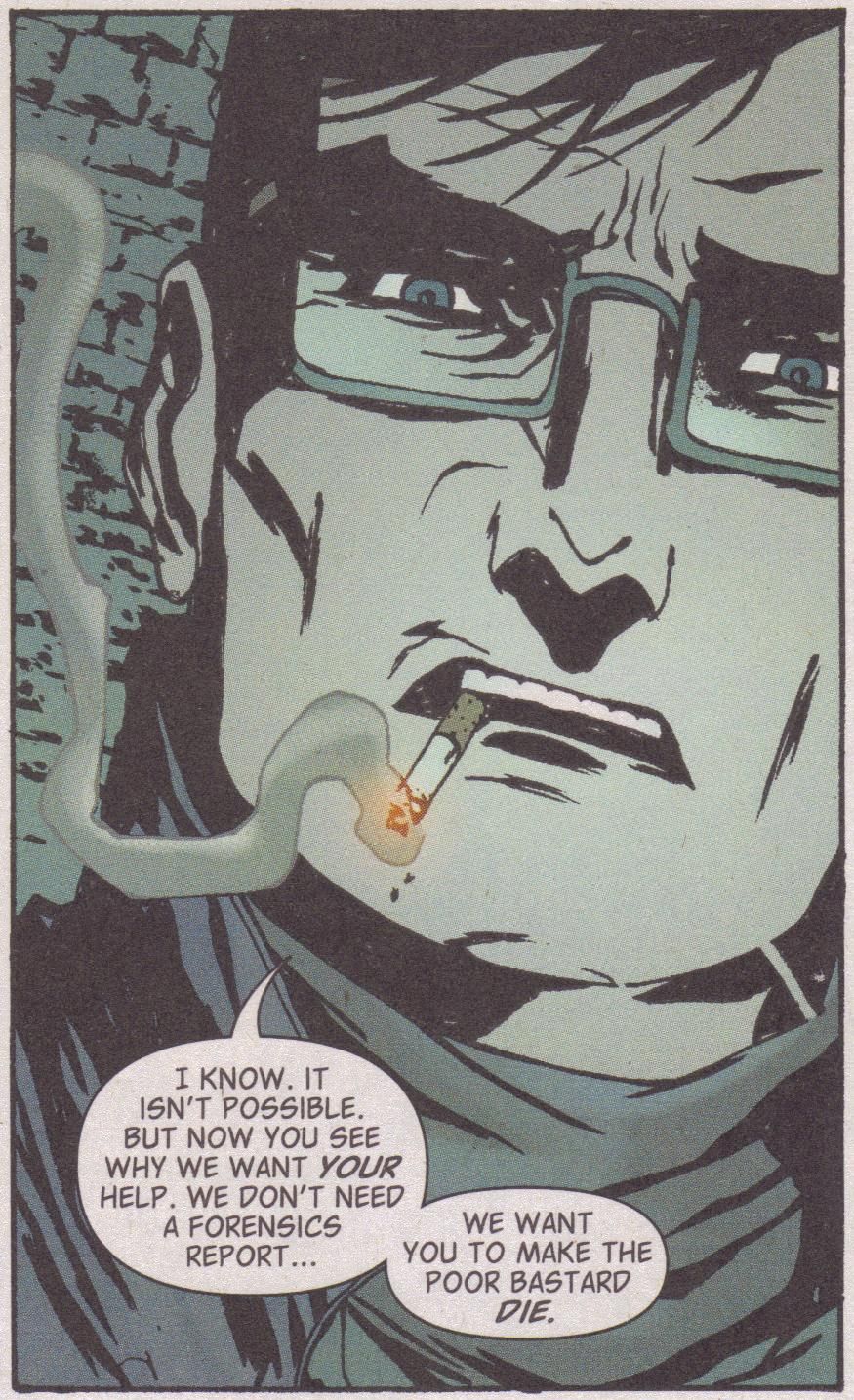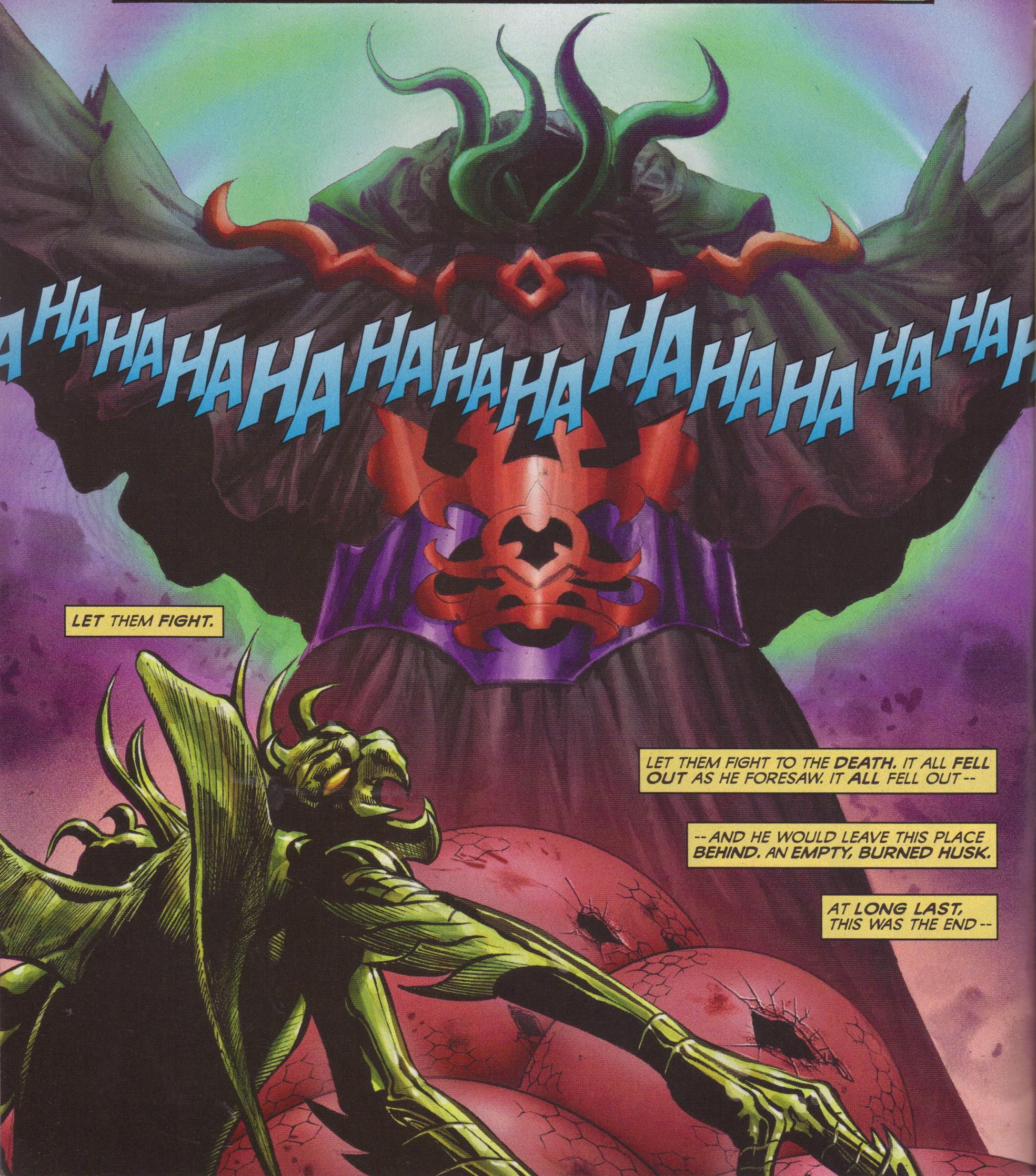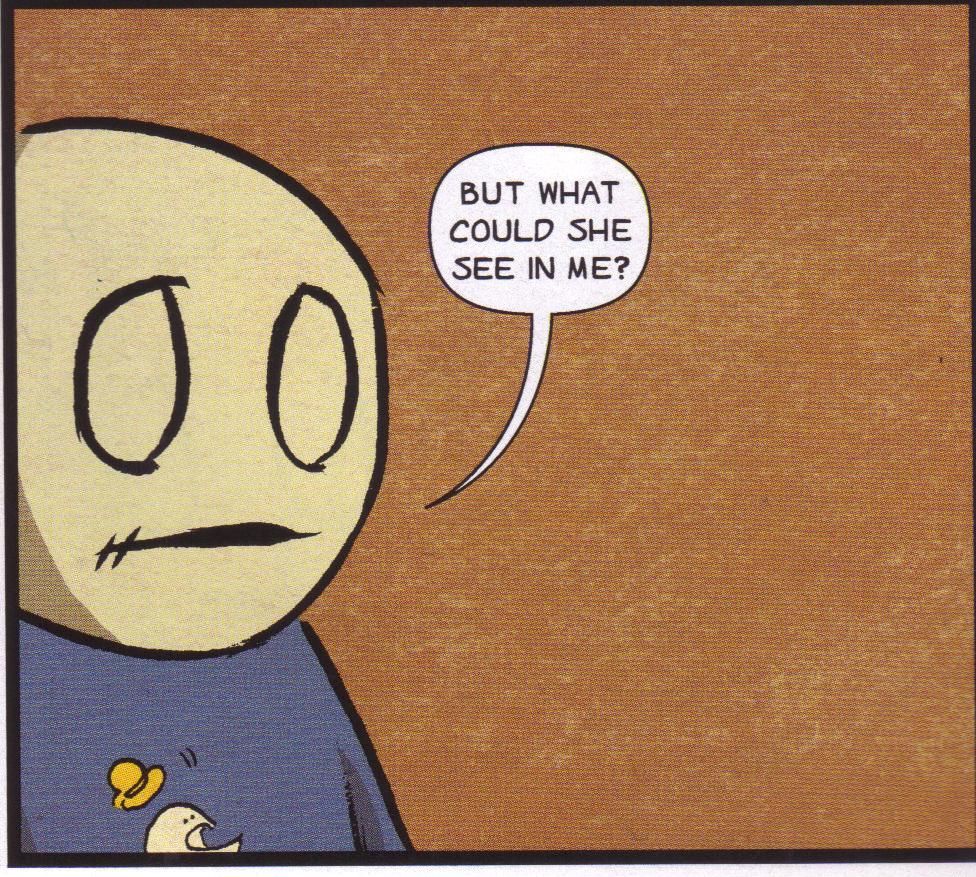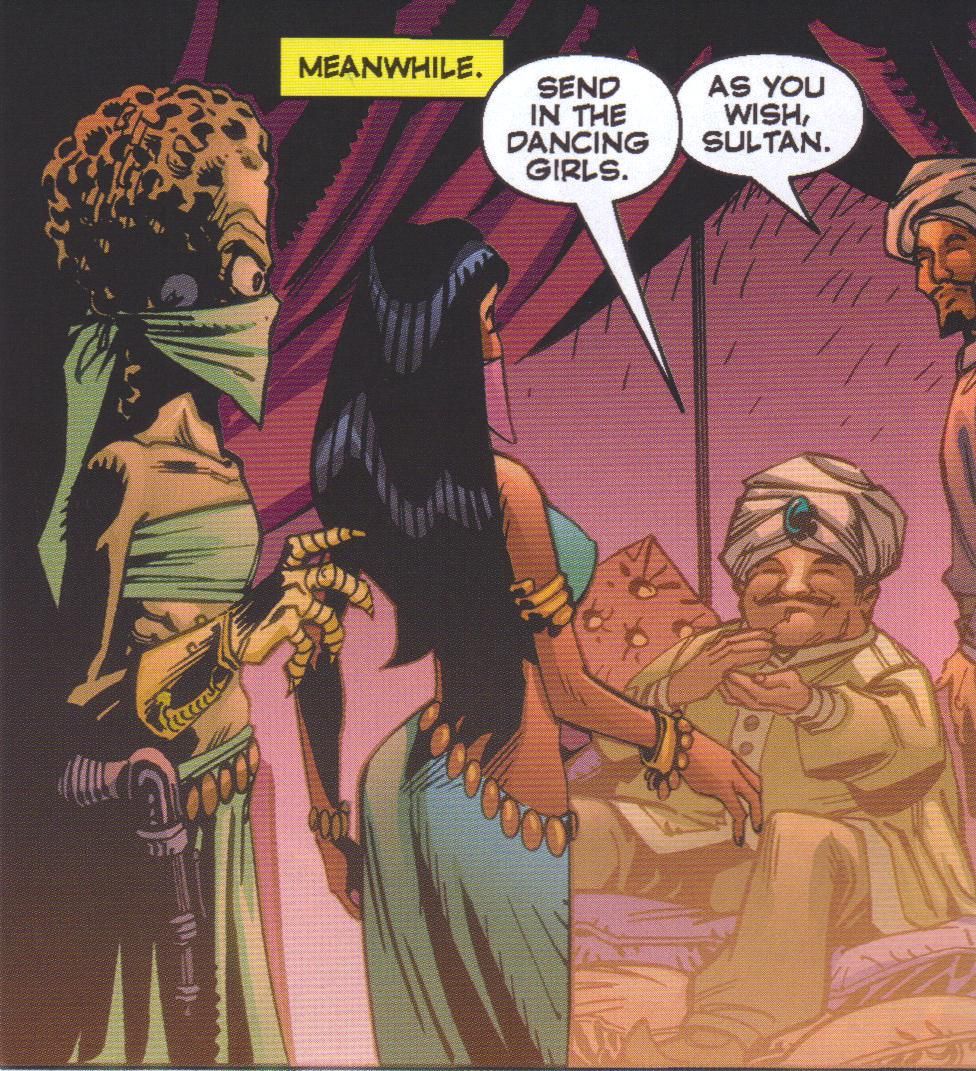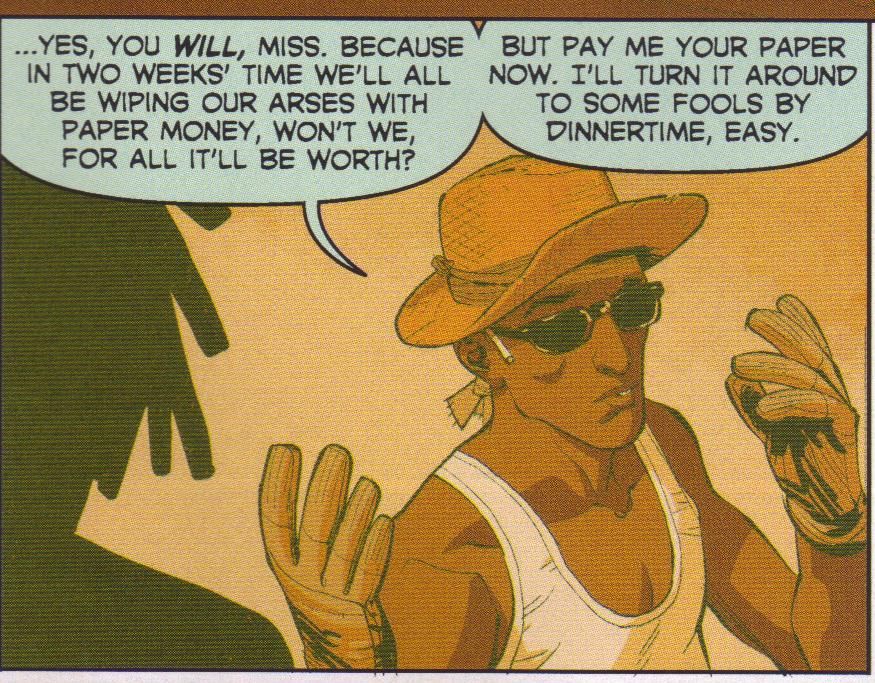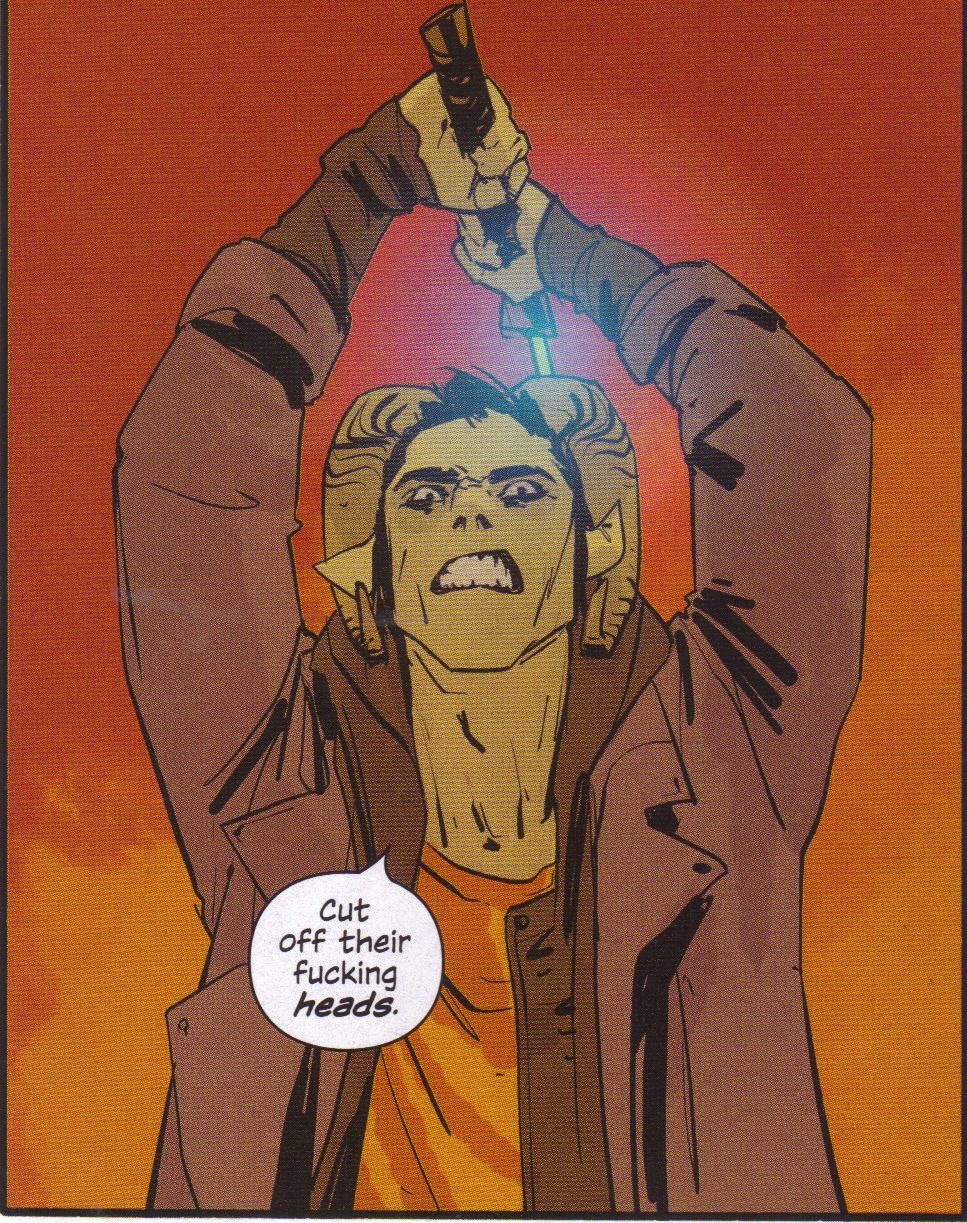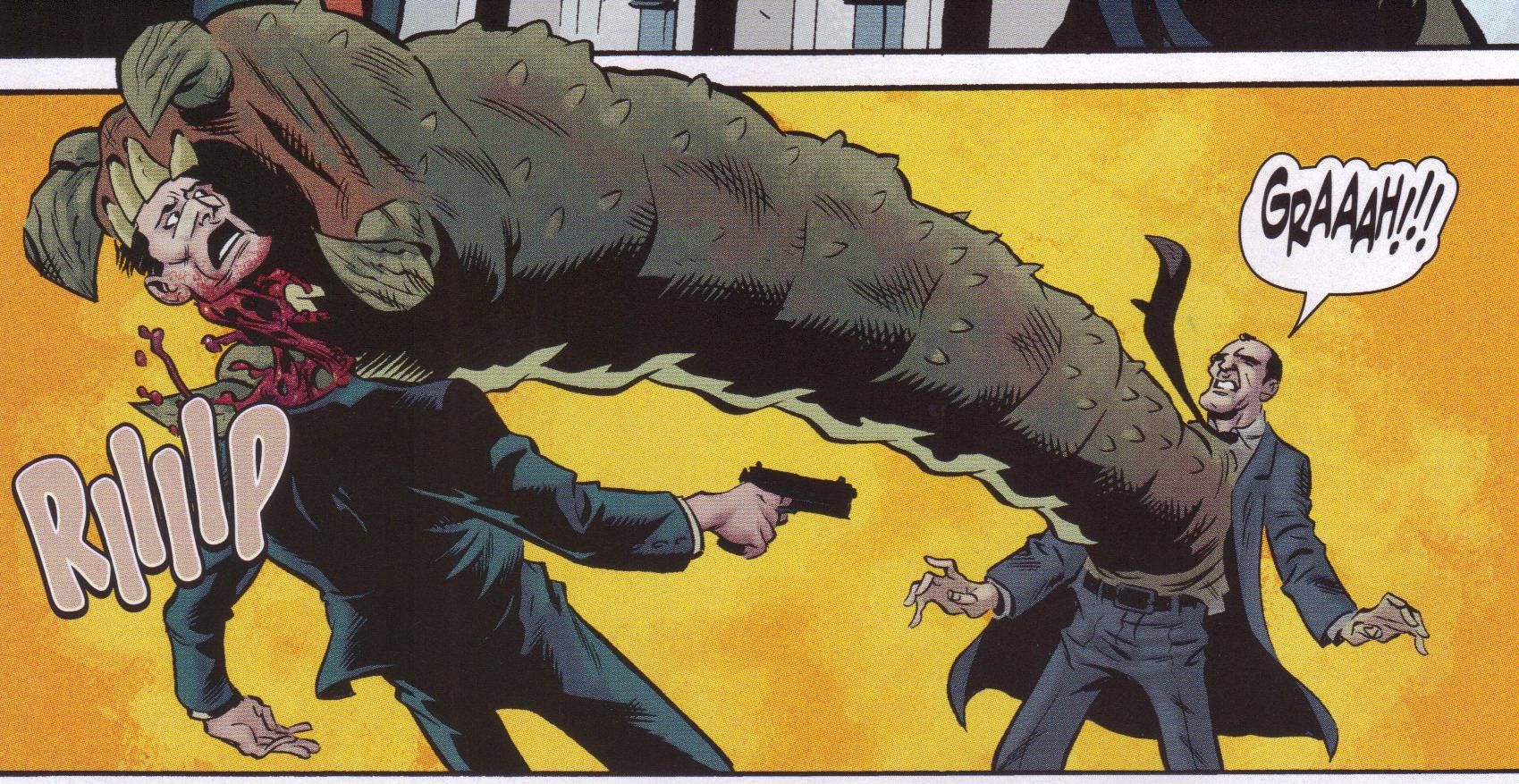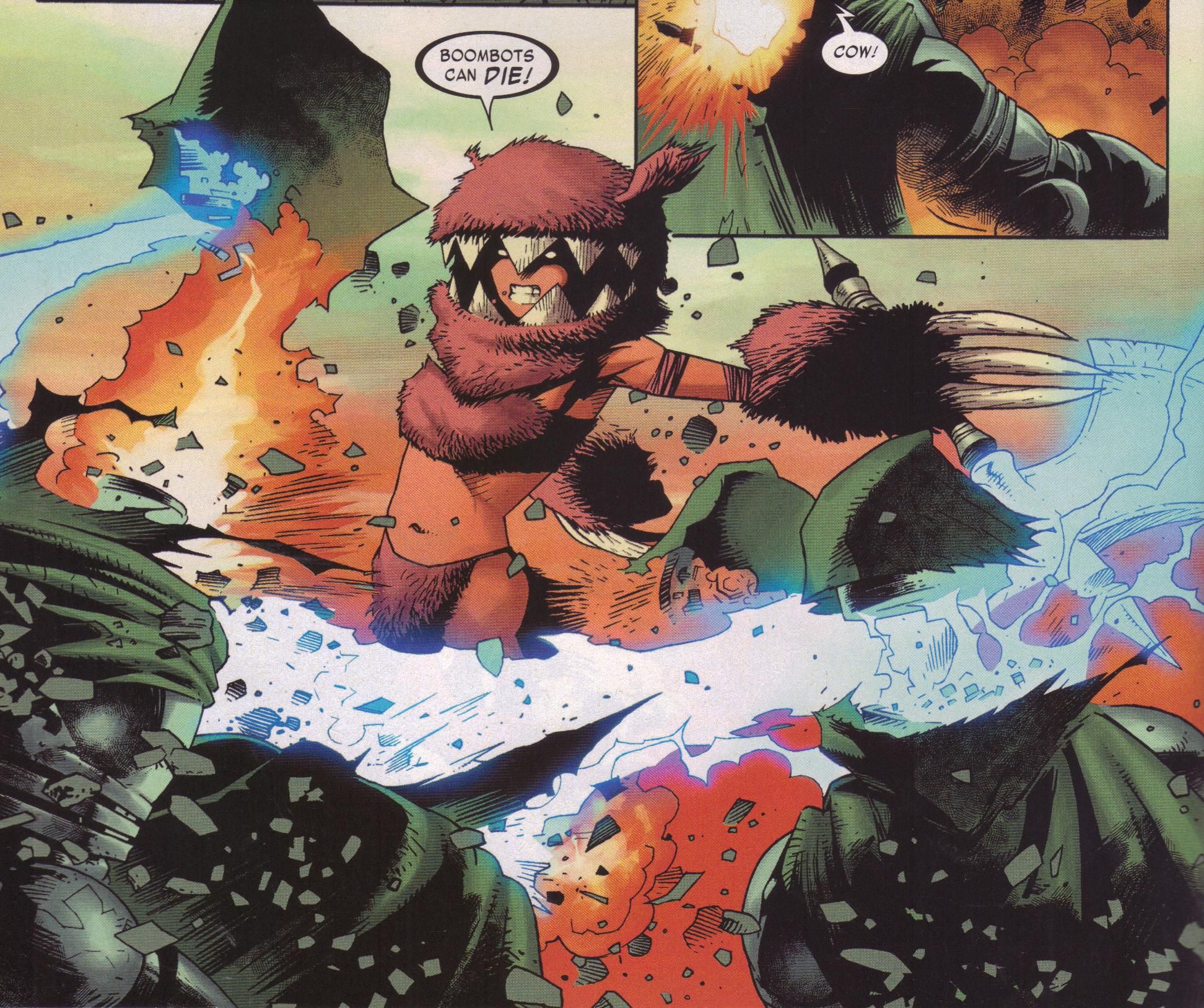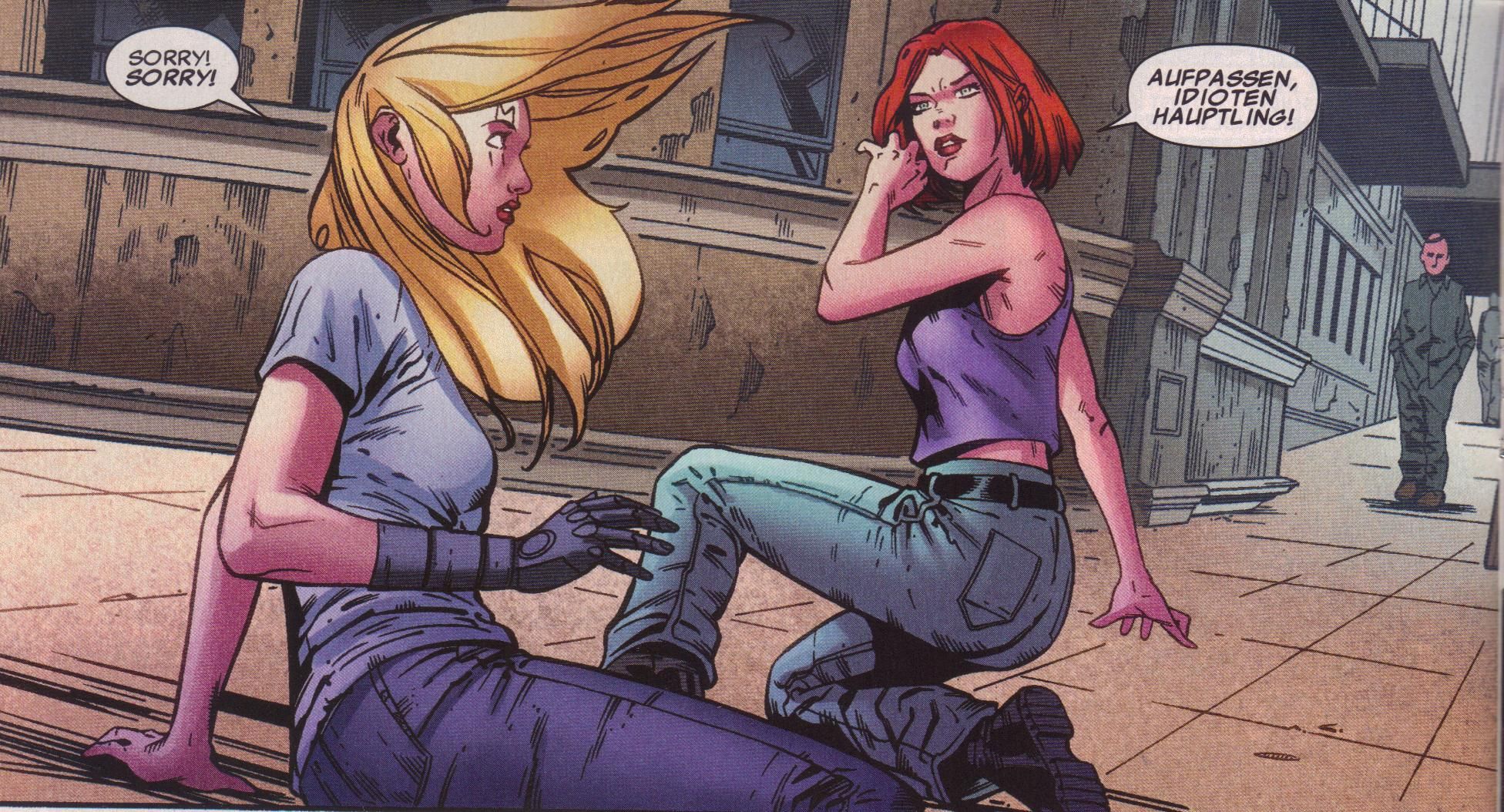"How do you feel, Yossarian?"
"Fine. No, I'm very frightened."
"That's good," said Major Danby. "It proves you're still alive." (Joseph Heller, from Catch-22)
Two weeks of comics, some controversial stuff on my mind - let's do this thing!!!! Plus, from now on, all of my reviews will be personally vetted by Pam. Pam is freakin' awesome.
Atomic Robo Presents Real Science Adventures #4 by Brian Clevinger (writer), Matt Speroni (colorist), and Jeff Powell (letterer). "To Kill a Sparrow Part 4" by Ryan Cody; "The Dark Age" by Zach Finfrock; "Most Perfect Science Division" by Xevi Benitez; "Leaping Metal Dragon Part 4" by John Broglia; "The Survivor" by Nic Klein (also colorist). $2.75, 20 pgs, FC, Red 5 Comics.
Clevinger packs five (5!) stories into this issue, which ought to mean I'm angry about it, because I've been advocating fewer stories in each issue of ARPSCA, but these are pretty good. As we turn the corner into the second half of the two serialized stories, things are actually happening, so they're better than the first two (in the case of the Sparrow story, the third chapter of which was pretty good) or three (in the case of the Bruce Lee story, which finally gets going a bit in this chapter). Robo's visit to a comic book story in 1994 is Clevinger going after low-hanging fruit (I should know, because I go after it quite often), but it's charming enough. I didn't like "Most Perfect Science Division" because it's just four pages of two robots fighting each other. I assume it's one of these things that Clevinger is just fooling around with and might be important at some other point, but it feels like padding in this issue. Nic Klein's introduction of Jenkins is a reprint from an early issue, and I'm not sure if it's reprinted in the trade paperback, which I own. If you missed how Robo found Jenkins in the first place, here's your chance, and Klein shows why he's getting more work these days.
As usual with the secondary Robo title, it's not quite as good as the main book, but Clevinger has fun with it, and the artists are perfectly fine. This series isn't essential reading (I know, no comics are essential, but bear with me), but it's not bad.
Rating: ★ ★ ★ ★ ★ ★ ☆ ☆ ☆ ☆
One totally Airwolf panel:
Avengers Academy #33 ("What the Heart Wants: Conclusion") by Christos Gage (writer), Timothy Green II (penciler), Jeff Huet (inker), Chris Sotomayor (colorist), and Joe Caramagna (letterer). $2.99, 20 pgs, FC, Marvel.
Chad Nevett, who's a much more evil bastard than I am (I say that with all the affection in the world), got really angry at Avengers Academy #32, in which Emma Frost wanted to erase Juston's Sentinel's CPU so that Hank Pym could reprogram it without the whole inconvenient "mutant-killing" part of its programming. Of course Hank eventually decided to side with his students who wanted to resist Emma, and of course his faith is rewarded in issue #33, because that's the way it has to be. I don't disagree with Chad, but I think he's forgetting a basic precept of both the Marvel and DC Universes: ten impossible things happen before breakfast every day. From reading his stuff for the past five years or so, it seems Chad wants superhero writers to write a "realistic" universe more than is feasible. If I'm wrong, he can tell me. While I think reading superheroes that are "realistic" is perfectly fine, that ain't what you read Marvel and DC superhero books for. So of course Juston's Sentinel is able to evolve, because that's what robots in the Marvel U. do. The point of AA #32-33 was not whether Juston and Hank were right or if Emma was right, because of course Emma was wrong. The point was that hope is ennobling and friendship is important and sometimes we have to trust that things are going to work out. Yes, it's sappy, but in today's comics world, something has to be sappy, right? Gage and his artists are, as I've pointed out, writing the anti-superhero comic in more ways than one. Not only does Gage avoid fights as much as he can (he can't in this issue, but he has in many other issues), but he never allows this book to sink into bleakness and despair. Fuck realism. If I want realism, I know where to go. Avengers Academy #32-33 was never about destroying a genocidal robot. Chad can read it that way, and if he chooses to do so, I can understand why he thinks the story stinks, because it's idiotic to think that Emma's solution wouldn't work for all concerned, especially when the only "personality" the Sentinel has displayed in this series (I don't know about the series in which it was introduced) is listing its prime directives. Of course Juston is being foolish, if we think the comic is about shielding a murdering machine. I don't think that's what the story is about, though. Feel free to disagree!
Rating: ★ ★ ★ ★ ★ ★ ★ ½ ☆ ☆
One totally Airwolf panel:
Bad Medicine #3 ("Killing Moon Part 1 of 3") by Nunzio DeFilippis and Christina Weir (writers), Christopher Mitten (artist), Bill Crabtree (colorist), and Douglas E. Sherwood (letterer). $3.99, 22 pgs, FC, Oni Press.
The second arc begins oddly but "realistically," I guess (for a book about werewolves), in that the "team" that solved the case in the first two issues isn't really a "team" - they went their separate ways, and it seems this story takes place some amount of time after the first one. But there's a new something weird going on in Maine, where a cop shot what he thought was a wolf until, on its death, it turned back into a teenaged boy (who looks nothing like Michael J. Fox, by the way), and now he's in a spot of bother over it because the CDC confiscated the video of the incident and no one believes the cop. Our intrepid heroes get back together, one of them brings along a new member who exists only to get butchered (come on, we've all seen horror movies), and they head up Maine, where they encounter a very weird town where, I'm going to assume, everyone is a werewolf already. I mean, come on, we've all seen horror movies.
So yes, of course it's derivative - it's very hard to write something that isn't. But it's well-done and entertaining, and I like the idea that the team doesn't work together all the time and doesn't even like each other all that much - they're professionals getting the job done, but right now, they don't really know each other, so why should they like each other? Mitten, of course, is his usual very good self, and Weir and DeFilippis set up the entire story perfectly well. I don't know - this is only 3 issues in, so I haven't made up my mind about it yet, but so far, I'm enjoying it. Even if I can see the plot points coming a mile away (with the caveat that I could be completely wrong, but come on - we've all seen horror movies!)
Rating: ★ ★ ★ ★ ★ ★ ½ ★ ☆ ☆
One totally Airwolf panel:
Batwoman #11 ("To Drown the World Part Six") by J. H. Williams III (writer), W. Haden Blackman (writer), Trevor McCarthy (artist), Pere Pérez (artist), Guy Major (colorist), and Todd Klein (letterer). $2.99, 20 pgs, FC, DC.
Williams and Blackman wrap up another arc, and as with the first one, it ends ambiguously. I seem to recall Williams on Kelly and Sue's podcast saying that the next arc (when he's back on art) is the epic conclusion to a 16-issue story, which is fine with me, because I like that kind of ambition, but I imagine this might be a bit frustrating to some. Anyway, Chase is pissed at Batwoman because she thinks Batwoman betrayed them, Kate sort-of comes clean to Maggie ("ghosts and all" - yeah, right), and we're set for a big ol' showdown (although I'm not exactly sure what the "next issue box" is all about). McCarthy does a decent job, for some reason Pérez chips in (I like McCarthy's art, but is he ever going to get a gig if he can't draw three monthly issues in a row?), and all is well in the Batwoman universe for now.
And then there's Bette. You knew I'd have to rant about Bette, didn't you? So Bette has been in a coma for a while, to the point where the doctors are going to start harvesting her organs. And then Jacob puts her mask on, and she wakes up. And speaks coherently to him. That made me angry. Look, I know people wake up from comas all the time. I did the tiniest bit of research and found that somewhere around 40-50% of people in comas wake up. So Bette waking up isn't surprising. What bothered me was that she was completely coherent even though she had to have suffered some massive damage, possibly to her brain. I can't recall exactly how much she was beaten, but there had to be lack of oxygen to her brain, which is almost the worst thing that can happen to your body. So she just wakes up, recognizes the person next to her, knows he put a mask on her, and asks about it? I call bullshit. Plus, I fear that this will lead to her leaping around and playing superhero again, and that tiny bit of research said that less than 10% of the people who wake up recover completely. I get that this is the DCnU and superhero universes work differently (see above with Avengers Academy!) and it's not really that Williams and Blackman have set the stage for Flamebird's return - whatevs - it's that I very much doubt if she'll rehab for the next two years before she goes out again, because two years never fucking passes in comic book time. If we went by the fact that Bruce Wayne solved "The Case of the Chemical Syndicate" five years ago, then Bette should be rehabbing for the next 20 years of our time, at the least. I doubt if Williams and Blackman will still be writing Batwoman's adventures then.
My point is, again, not that comics shouldn't have "realistic" elements to them. My point is that if you're going to introduce "realism" into your comics, be prepared to deal with them "realistically." I'm sure Bette will be back superheroing in a few issues and everyone will be talking about what a "miracle" it is, and yes, "miracles" happen in our world. But they happen every day of the week and twice on Sunday in the DCnU and Marvel U., and it's kind of annoying. It makes the fact that they kept Barbara Gordon in a wheelchair for 23 years one of the most impressive achievements in the history of comics!!!!
Rating: ★ ★ ★ ★ ★ ★ ☆ ☆ ☆ ☆
One totally Airwolf panel:
Captain Marvel #1 by Kelly Sue DeConnick (writer), Dexter Soy (artist/colorist), and Joe Caramagna (letterer). $2.99, 21 pgs, FC, Marvel.
I just saw that there's a minor controversy about this comic book. Over at 4thletter!, everyone's favorite shit-stirrer David Brothers (I say that with nothing but affection, much like calling Chad "evil" above) points out a tweet by Dan Slott which basically is trying to guilt everyone into buying this comic. That's a pretty shitty thing for Slott to do, and Brothers points out why. Here's the thing, though, that bugs me, and I'm going to be a bit self-congratulatory, if you don't mind, because I think this applies to a lot of our readers, at least: I read books by a lot of different people. Just in these two weeks I bought a book with a story starring a female spy (Atomic Robo), a book starring several good female characters (Avengers Academy), a book written by a husband-and-wife team (Bad Medicine), a book with three very strong female characters (Batwoman), this comic, a book that features several female creators (Dark Horse Presents), a different book with three female leads, one of whom is motherfucking awesome (Glory), a book with one of the best female characters of the past few years, in my humble opinion (Hellblazer), a book drawn by a very hot (in terms of buzz, not in terms of appearance, because we shouldn't judge talent by appearance, although I'm not above linking to a photograph!) female artist, Fiona Staples (Saga), and a book with several good female characters that is colored by a rising female star, Rachelle Rosenberg (X-Factor) (and, just for Travis). Did I buy any of those books because of their female quotient? Of course not. I bought them because I like them. I certainly like that more women are working in comics and getting more opportunities, but I got this comic not because DeConnick is a woman, but because she's written some things in the past that I've liked and while I'm moving to trades on most of the DC and Marvel books I read, this was only 3 bucks (rather than Marvel's price-gougingly odd 4 dollars for first issues), so I got it to see if I'll get the trade when it comes out. I agree with Brothers that Slott seems to imply that if we don't buy this comic - regardless of its quality - we don't really want women writing comics and don't really want female characters headlining their own books. To which I say: bullshit, sir. I don't know if Slott really meant that, but I'm kind of glad I didn't read that before I bought this comic, because it might have actually put me off it.
The problem with Slott's tweet is that Captain Marvel #1 really isn't very good, and it becomes worse the more you think about it. Soy's artwork is lousy, even though Steve Wacker gushes over it in the letters page, saying it helps "this comic stand out from the dozens of other books debuting every month." Well, sure, it stands out, but that doesn't mean it's any good. A few years ago, when I was receiving a lot of Radical comics in the mail, I often bemoaned this kind of artwork, which is heavily reliant on digital paints, which gives it a horribly over-rendered look. I hoped that this kind of stuff wouldn't infiltrate the mainstream, which despite the presence of people like Greg Land still seems restrained compared to this, but it appears my hopes are about to be dashed. Soy's oppressive color palette turns the men in the book (even someone fairly lithe like Spider-Man) into steroid freaks, and so far his characters exhibit two basic facial expressions - vacancy and rage. The computer effects look amateurish, as do some of the panels where Soy is drawing actual hands (without gloves) and feet. I know you could have looked up Soy's work on yonder Internets, but putting an Ed McGuinness cover on this might have made me even angrier, because their styles are so, so different, and it feels like Marvel was trying to hide Soy's work. If you want to launch a comic that stars a character who isn't all that popular with a writer who's just beginning to find her footing, you better have a great artist. Soy is not a great artist or, at this point in his career, even a particularly good one.
DeConnick's story is lousy, too, unfortunately. This is almost a waste of a first issue, because it does nothing except introduce a character most Marvel readers ought to be a bit familiar with, and does it poorly. If you're buying this solely because DeConnick is writing it and don't know anything about Carol Danvers, DeConnick explains her powers in two small panels. That's all you need! Yet the rest of the issue is basically plotless blather. DeConnick uses a tried-and-true cliché to introduce Carol - she and Captain America are fighting a pushover villain on the first few pages. This time it's Crusher Creel, but it could easily have been the Rhino or Man-Elephant (which would have been awesome, considering Guido fights him in X-Factor this week - can the world handle two brief appearances by Man-Elephant - or Behemoth - in the same week?!?!?!?). I don't like these kinds of introductions, because usually some writer has done some nice work with the villainous characters in the Marvel Universe that is invalidated by another writer trying to prove how cool the heroes are. Not even two years ago, Crusher Creel and Titania were featured in Avengers Academy, and although they were powered by whatever the hell was going on in Fear Itself, Creel certainly wasn't a joke. DeConnick not only makes him a joke, powers-wise, she makes him mind-numbingly stupid, too. It made the beginning of this book pretty dull, except that it introduces two themes that run throughout the book: Carol's superhero name and the fact that she's a woman. Yes, after defeating Creel, DeConnick spends seven (7) pages on whether Carol should call herself "Captain Marvel." Jeebus, what a way to grind the book to a halt. Peter Parker (is he again hanging out with the Avengers without his mask on these days?) shows up and makes a big deal out of Carol's haircut. I guess people (meaning, I suppose, Neanderthal men) got their boxers in a twist over Jamie McKelvie's original "new" design of Carol because her hair was short. (Looking at some stories, I guess it wasn't really "short," just pulled back a little, but it does look a bit shorter in the original designs, before Marvel changed it back to "long" again.) I mean, everyone knows that only lesbians get their hair cut short, so when McKelvie designed it differently, it obviously meant that Carol was coming out of the closet, and we can't have that! Second, everyone knows that women with short hair are ugly, and we can't have that! Third, if she has short hair, how will Neanderthal men drag her into the bedroom to have sex with her, and how will she throw her head back and have her hair cascade all over her shoulders when she's in the throes of passion? It's just SCIENCE, people! But to get back to the name debate - really? She agonizes over calling herself "Captain Marvel" instead of "Ms. Marvel"? Like that first issue of Aquaman where everyone called him lame even though I doubt actual people in the DCnU would think he's lame and Johns was just writing what people in the real world would say, DeConnick seems to writing a debate that people in the real world are having. It's dreadfully dull.
Then she introduces a friend of Carol's who has cancer. That's fine. The friend points out that a famous female pilot has died, which sends Carol into a reverie about the time when she met the pilot (Helen Cobb). Carol has her flashback and then attends the funeral of Ms. Cobb. The end. Apparently this will set up the exciting scene next issue where she races Helen Cobb (in planes, you know - they're both pilots), which sounds really, really exciting, if you ask me. The flashback is fine except for the part where Helen tells Carol she was in the Mercury 13 program, which was the nickname of a privately funded program of 13 women who underwent the same testing as the Mercury astronauts (Cobb's last name is the same as one of the actual participants). Cobb tells Carol, "Now those gals -- those were some pilots. Outscored the seven boys on just about every test we took." This is a dumb statement. Astronaut testing, from what I can tell (and I'm sure someone will correct me), wasn't about getting more answers right on a math test, it was about passing psychological and physical stress tests. If you passed, you went on. You didn't "outscore" anyone, you simply passed or failed. Cobb's remark is meaningless - she could easily say that the Mercury 13 women were as good as the Mercury 7 astronauts, because they were. I know I'm going to get raked over the coals for this, but I'm getting a bit tired of history being revised so that not only are women as good as men (which is fair) but always better than men. Some of the women in the "Mercury" program washed out, and some of the men did. This idea that throughout history, women have always been better than men kind of bugs me as a man. Yes, boo-hoo, the straight, white, middle-class American man is offended by something, but my point is that this kind of revision is annoying because it's meaningless. It's pretending that the women of Mercury 13 were "better" than the men when that statement makes no sense. Yes, the women who were tested were discriminated against, there's no doubt about that. But DeConnick has no idea if they were "better" than the Mercury 7 astronauts. I actually appreciate that she brought the whole thing up, because I didn't know about the "Mercury 13" program and now I do, but I don't think men or women need to prop up their heroes by tearing down other ones. It's not John Glenn's fault that "Helen Cobb" wasn't allowed to go into space.
Sorry for the rant. I tend to accept criticism of straight, white, middle-class American males because we're one of the last groups you're allowed to make fun of and, let's be honest, it's often deserved, but that bugged me. Even without that scene, this is a bad comic book. It has no conflict, very little character development, and seems to exist as a kind of empowerment homily, which Carol Danvers doesn't seem to need. Carol is an extremely tough woman, and this whole "we will be the stars we were always meant to be" crap seems beneath her. Oh well. I still think DeConnick is a decent writer and probably will check out the next book she works on, but I won't be back to Captain Marvel. DC and Marvel don't get a lot of rope with me these days!
Rating: ★ ★ ★ ½ ☆ ☆ ☆ ☆ ☆ ☆
One totally Airwolf panel:
Chew: Secret Agent Poyo by John Layman (writer/letterer), Rob Guillory (artist/colorist), and Taylor Wells (color assistant). $3.50, 22 pgs + 10 pin-ups, FC, Image.
Secret Agent Poyo is more whimsical than most of Chew, which is saying something. I haven't asked Layman (the new writer on Detective Comics, which he told me about six weeks ago and which I couldn't reveal, and it was driving me nuts) if he planned to bring Poyo back from the dead originally or if the fan response prompted it, but Poyo is indeed back, and Layman has some fun with him. First he conquers Hell, then, when a crack team of surgeons brings him back to life, he thwarts a mad scientist in typical gruesome fashion. Guillory gets to draw a scene from the "Viltrumite Interstellar Mustache Wars," Poyo's fight with "Genghis Condor," and a team-up with Image characters Witchblade, Spawn, Savage Dragon, Shadowhawk, and is that Deathblow? He also falls in love ... twice. It's a silly issue, but Layman goes typically balls-to-the-wall and Guillory has a blast, and I assume that some of this stuff will play into the series later, especially the final page. If you want an introduction to the kind of comic Chew is, this isn't a bad place to start. Of course, you should already be buying Chew, so there's that.
Rating: ★ ★ ★ ★ ★ ★ ★ ☆ ☆ ☆
One totally Airwolf panel:
Dark Horse Presents #14. "Nexus: Infestation" by Mike Baron (writer), The Dude (artist/letterer), and Glenn Whitmore (colorist); "Riven Chapter 1" by Bo Hampton (storier/artist/letterer) and Robert Tinnell (storier); "Radio Ga Ga" by Chad Lambert (writer), Apri Kushbiantoro (artist), and Jaymes Reed (letterer); "Wild Rover Chapter 1" by Michael Avon Oeming (writer/artist) and Aaron Walker (letterer); "Buddy Cops Chapter 1" by Nate Cosby (writer), Evan Shaner (artist), and Rus Wooton (letterer); "A Spy Dream" by George Schall (writer/artist/letterer) and Rodrigo Alonso (writer); "Love Hurts" by Kim W. Andersson (writer/artist); Strips by Jim Benton; "Aliens: Inhuman Condition Chapter 3" by John Layman (writer/letterer), Sam Kieth (artist/colorist), and John Kalisz (colorist); "Finder: Third World Chapter 12" by Carla Speed McNeil (writer/artist), Jenn Manley Lee (colorist), and Bill Mudron (colorist); "Ghost: Resurrection Mary Chapter 2" by Kelly Sue DeConnick (writer), Phil Noto (artist), Richard Starkings (letterer), and Comicraft (letterer); Mister X: Hard Candy Chapter 3" by Dean Motter (writer/artist); "Falling Skies: Luck" by Mark Verheiden (writer), Bryan Oh (writer), Mark Nelson (artist), and Nate Piekos (letterer); "Concrete Park Chapter 4" by Tony Puryear (writer/artist); "Hellboy Vs. the Sabretooth Vampire" by Mike Russell (writer/artist/letterer) and Bill Mudron (colorist). $7.99, 104 pgs, FC, Dark Horse.
So this time around, we get a 'roided-up version of Dark Horse Presents, with 104 pages for the same price, which isn't a bad value. I know Dark Horse doesn't have to pay its talent as much as DC and Marvel, but when the Big Two are whining about the fact that they just can't give us 22 pages anymore without doubling their prices, Dark Horse is making them look just a little silly. Nut up, DC and Marvel! Some of that Avengers and Dark Knight money could go toward making things easier on the consumers rather than paying for Mongolian hookers and hashish!*
* Pam says: "Mr. Burgas is simply exercising his first-amendment rights to speculate on what DC and Marvel bigwigs spend their money on. Last month Mr. DiDio paid for and built three orphanages in Bangladesh. By himself. With his bare hands. That's what he spends his money on! Mr. Burgas is probably correct about the executives at Marvel and their expenditures, though."
Anyway, we get a bigger package this time around, but the quality doesn't necessarily improve. It's not, in other words, 20% better because it has roughly 20% more pages. Considering DHP is a fine comic, this doesn't matter too much, but there does seem to be slightly more ... filler this time. I mean, we do get 12 pages of the Dude's artwork this time around, which is always nice. Oeming's story isn't all that good, but his art is nice. "Buddy Cops" is ridden with clichés, but because Cosby is deliberately using those clichés, it tends to work - his cops are "a galactic space protector demoted to the NYPD" and "a 1970s android programmed to follow the exact letter of the law." The cops hate each other, but they work well together, apparently. Schall's story of a spy dreaming of a domestic life is fascinating because he leaves it open that it's really a domestic housewife dreaming of being a spy, while "Love Hurts" is all kinds of creepy and is far better if you don't think about it too much (doesn't anyone know this woman and wonder where she is?). Layman's Alien story is taking better shape, as is DeConnick's Ghost tale. I still don't get "Concrete Park," unfortunately. Maybe it will all make sense when it's finished, but it doesn't right now. The "filler" includes the Falling Skies story, which is set right before the ending to Season One and doesn't really offer anything of worth to the characters, and "Radio Ga Ga," in which the main character is the author, who tells us an anecdote about the time he was investigated (briefly) by the Secret Service. There's really no point to it at all. I wanted to like the Bo Hampton horror story, but it bugged me, because it makes no sense. I'm going to SPOIL it, but the first chapter deals with a American couple wanting to adopt a little girl in Romania. The two women who run the agency (I don't think they're nuns, but they might be) allow them to adopt a girl even though they know she's a monster. My question is, Why don't they kill her? She appears vulnerable at certain times (the implication is that she's a werewolf), so they probably could. I get that she's an innocent girl who can't help killing people (if that's true), but that's still a mean trick to pull on the poor American couple. And if she is a werewolf, won't she turn that very night, kill the couple, and go on a rampage? Couldn't the women have just dumped her in the forest somewhere and she would have done that anyway? I imagine some of these questions will be answered in future chapters, but this first one bugged me because it trafficked in horror story clichés without even trying to explain them.
So, yeah, a nice giant-sized issue of Dark Horse Presents, which makes it an even better value. It's too bad everything in it isn't genius, but that's the way it is, isn't it?
Rating: ★ ★ ★ ★ ★ ★ ½ ☆ ☆ ☆
One totally Airwolf panel:
Fables #119 ("Cubs in Toyland Chapter 6: Wooden Toys"/"A Revolution in Oz Chapter 6: The Lollipop Killed") by Bill Willingham (writer), Mark Buckingham (penciller, "Cubs"), Steve Leialoha (inker, "Cubs"), Shawn McManus (artist/colorist, "Oz"), Lee Loughridge (colorist, "Cubs"), and Todd Klein (letterer). $2.99, 20 pgs, FC, DC/Vertigo.
The last two issues of Fables have been pretty good, which doesn't really make up for the interminable first four chapters. Apparently there are TWO more chapters to go, and when it's all said and done, I can't believe this needed to be more than four or five issues long. But we play with what we're dealt, and in this issue, Therese goes ... well ... a bit nutty (see below), but I wonder if she has some kind of evil plan to thwart the toys, while what's-his-name - Therese's brother - is still alive and plotting his rescue, but it doesn't sound good for him, either. It's a fairly gripping issue, but I really don't know if we needed to wait this long to get to it. Oh well - I'm still thinking about moving to trades on this book or dropping it altogether. With the pace of this arc, trade-waiting is looking better and better.
Rating: ★ ★ ★ ★ ★ ★ ★ ☆ ☆ ☆
One totally Airwolf panel:
Fantastic Four Annual #33 ("Through a Dark Glass Paradoxically") by Alan Davis (writer/artist), Mark Farmer (inker), Javier Rodriguez (colorist), and Clayton Cowles (letterer). $4.99, 38 pgs, FC, Marvel.
The idea behind this annual is that Alan Davis wanted to do some more stuff with the ClanDestine, the group of superpowered siblings he created years ago (and which I have written about before), so Marvel, instead of letting him do a mini-series, gave him three different annuals (the Daredevil and Wolverine ones are the other two) this summer to tell his story. Reed and Sue don't appear in this annual (which is always nice), and even Johnny and Ben don't have a whole lot to do - they're kind of pawns of Vincent, the Destine child who was dead at the beginning of the original run but who's alive in this book (it involves time travel). We actually find out what happened to Vincent, and it's a tiny bit disappointing because it feels so mundane. This is almost even a Doctor Strange story, as he plays a prominent role. Basically, this is a beautifully drawn comic that lets Davis tell more stories about his own creations, and that's a very good thing. He tells a pretty much self-contained story and doesn't get too much into who the Destines are and what their deal is, so if you haven't read the series, you can pick this up and follow along pretty easily. I like this idea, because it feels like old-school 1970s Marvel, when some characters appeared across various magazines that kept getting cancelled but which followed a common plot thread. Davis introduced the characters in Marvel Comics Presents, then they got an ongoing, some issues of which are safely ignored because Davis had nothing to do with them, then they got a mini-series, and now three annuals starring characters that have no connection to the family. It's pretty keen, if you ask me. But I'm weird that way.
Rating: ★ ★ ★ ★ ★ ★ ★ ½ ☆ ☆
One totally Airwolf panel:
Glory #28 ("Destroyer Part Three: Reckoning") by Joe Keatinge (writer), Ross Campbell (artist), Joseph Bergin III (colorist), Owen Gieni (colorist), and Douglas E. Sherwood (letterer). $2.99, 20 pgs, FC, Image.
Damn, this is an awesome issue of Glory. At the end of last issue, one of the monsters told Riley that she was fighting on the wrong side, but she says that's bullshit. But is it really? Anyway, Glory, Riley, Gloria, Henry, and Beleszava (I'll get back to Beleszava) take the fight to the weird monsters, and there is much glorious slaughter. GLORIOUS!!!!! Then Glory decides they don't have enough firepower for this war, so she suggests ... her little sister. Who's even more bloodthirsty than Glory, apparently.
Campbell, as usual, draws the crap out of this, with almost too many excellent monsters to count (and I'm not trying). The highlight of the issue might be the second and third pages, where we get introduced to Beleszava, a giant winged cat who shoots lightning out of her eyes. I'll repeat that: she's a giant winged cat who shoots lightning out of her eyes. Keatinge has the spread posted on his blog, in case you're interested. It's way cool, and although nothing else in the issue quite comes close, Campbell certainly tries hard, leading up to that awesome final page. This book is not for the faint of heart, as Campbell draws gleeful carnage on almost every page, but it's absolutely gorgeous. Keatinge hasn't done a whole lot with the characters yet, but Riley is interesting, and as she's the point of view character, that's fairly crucial. Keatinge is just putting the characters through their paces and letting Campbell go nuts, which is pretty smart, if you ask me.
I think the trade of these first five issues is coming out next month, so if you've been thinking about getting it, find it and pick it up. It's pretty awesome.
Rating: ★ ★ ★ ★ ★ ★ ★ ★ ½ ☆
One totally Airwolf panel:
Hellblazer #293 ("The Curse of the Constantines Part One: The Stolen Child") by Peter Milligan (writer), Giuseppe Camuncoli (layouter), Stefano Landini (finisher), Brian Buccellato (colorist), and Sal Cipriano (letterer). $2.99, 20 pgs, FC, DC/Vertigo.
Milligan begins a new arc, as John kind of decides to fulfill his promise to look for his nephew, mainly because something is freaking him out and he's acting douchier than usual. A detective constable calls him out to investigate what looks like a corpse but turns out to be something far more disturbing, and that connects him to his nephew, who I guess is some dude living in Ireland who doesn't quite understand what is going on in his head. As usual, Milligan is doing a pretty good job showing what a true jerk John is and also that he's not quite in as much control of himself as he thinks, because this time around, he doesn't even know why he needs to find the nephew. I've written this before, but I'll write it again - I do dig this John Constantine, because he doesn't seem to know what he's doing or why things are happening. Such is the case here.
This is the first of two comics this week that reference a William Butler Yeats poem. I like Yeats, but it seems like comic book writers quote him a lot. It's usually "The Second Coming," of course (that's the one Peter David quotes), but it's interesting that Yeats is such a popular poet among the comic book set.
Rating: ★ ★ ★ ★ ★ ★ ★ ½ ☆ ☆
One totally Airwolf panel:
Kirby: Genesis #8 ("Deep Secrets") by Kurt Busiek (writer), Jack Herbert (artist), Alex Ross (artist), Vinicius Andrade (colorist), and Simon Bowland (letterer). $3.99, 24 pgs, FC, Dynamite Entertainment.
Kirby: Genesis comes to an end, and while Busiek doesn't re-invent the wheel or anything, this remains an entertaining comic full of glorious artwork by both Herbert and Ross. Ross, especially, gives us a superb double-page spread (Herbert draws some of it, but it's mostly Ross) that reminds us why we liked him in the first place - he does BIG! stuff very well. We also get a nice page in an old-school Kirby style, which is always fun to see. The thing about this series is that it reads like a Big Two crossover, with several different characters who don't get developed too much, a central character who undergoes a hero's quest, and BIG IDEAS thrown around but in not too complex a way ... except it's far more entertaining than your usual Big Two crossover. Busiek can write this kind of thing in his sleep (not that I'm suggesting he wrote this in his sleep, but he could have!), and although it feels like comfort food for an older generation of comic book fans who are disgusted with the direction the Big Two have taken, that doesn't make it bad. It's pure sappy spectacle, and much like with Avengers Academy, there's not really enough of that around these days. Check out the trade and have some fun!
Rating: ★ ★ ★ ★ ★ ★ ★ ☆ ☆ ☆
One totally Airwolf panel:
The Li'l Depressed Boy #12 ("Brand New Shoes") by S. Steven Struble (writer/colorist/letterer) and Sina Grace (artist). $2.99, 24 pgs, FC, Image.
This is the last issue of The Li'l Depressed Boy that I'll be buying, and I'm actually a little depressed (ha!) about it. Struble is a hell of a nice guy, and I still think that the first four issues of this book are very charming, but although it's been on the uptick during the third arc, I'm just not that interested in it anymore. I do like that Struble ended this arc with some cheery news for LDB, but it's just not enough to get me to continue. The screeching halt of issues #5-8 and his Hamlet-like wishy-washiness of this arc can't overcome the slight increase in charm when Spike entered the book. Sigh. Too bad. I still think the first trade, which collects issues #1-4, is worth a look. Sorry, Steven.
Rating: ★ ★ ★ ★ ★ ½ ☆ ☆ ☆ ☆
One totally Airwolf panel:
Mars Attacks #2 by John Layman (writer/letterer), John McCrea (artist), and Andrew Elder (colorist). $3.99, 22 pgs, FC, IDW.
After the prologue of issue #1, in which we found out why the Martians would attack us in 2012, we get to the actual attack, and Layman and McCrea have a lot of fun showing the Martians slaughtering their way through the world. It's always funny, from the fact that the weapon the humans built on the specifications of a Martian turns out to not work as well as they thought it would to the man who, for a few minutes at least, is so busy listening to his iPod that he doesn't realize the Martians are killing everyone around him. In the second half of the book, Layman slows down slightly to show the astronaut who saw the first Martian ship land 50 years earlier meet the president - he's now a senator, and he wants to expand SETI. The president takes him to a "Scientists of the Future" photo op, and of course all the "humans" turn out to be Martians who can temporarily change their appearance. I have no idea if Layman wrote this scene simply to provide McCrea with a total FUCK YEAH! moment, but we get it, and it's pretty awesome.
Buck Spencer, the astronaut-turned-senator, is the only character who gets any kind of development, because Layman is concerned with the frenetic pace, and this book is frenetic. McCrea is excellent on art - this is far better than his work on the Hitman/JLA crossover from a few years ago, which might have something to do with the coloring, because Elder is also excellent. I honestly don't care if Layman doesn't do much with the characters - he's doing just enough, and it allows McCrea to go crazy with the artwork. Right now, that's a winning combination.
Rating: ★ ★ ★ ★ ★ ★ ★ ★ ☆ ☆
One totally Airwolf panel:
The Massive #2 ("Landfall Part 2 of 3: HK") by Brian Wood (writer), Kristian Donaldson (artist), Dave Stewart (colorist), and Jared K. Fletcher (letterer). $3.50, 25 pgs, FC, Dark Horse.
I'm still not completely on board with The Massive, but I have faith that I will eventually - Wood is too good. I think that he doesn't really need to keep showing us what happened to turn the world into the place it is now, especially because it's easily the worst parts of the issues - the events are presented in as clinical a way as possible, a dry recitation of events that grinds everything to a halt. I still don't think Wood needs those parts this early in the story, because I think we're perfectly willing to accept an environmental catastrophe and don't really need an explanation yet, if ever. Remember that Mad Max took place before an apocalypse, and Mad Max 2 (The Road Warrior, its American title, is much better) took place after one ... and we never really got an explanation, we just dealt with it. Wood isn't really doing the book any favors by explaining so much, because it still doesn't make too much sense.
Furthermore, after a fairly tense confrontation between Mary and the pirates in issue #1, Wood ... ignores her for the entire issue. Well, that's not entirely true - we see her in flashback - but Mary doesn't show up in the present until the final page, which makes the plotting of this issue feel wonky. In the present, Callum and Mag think they've found the Massive, but of course they haven't. In a flashback, they go to Hong Kong, Callum gets attacked, and a plane crashes into the skyscrapers. None of it is terribly exciting, but as I mentioned, Wood is a good writer, so I can deal with some world-building. I do wish Wood would focus more on the plot than he's doing, but that's the way it is, I guess.
Donaldson again does some nice work and some lazy work. I mentioned last time that I don't really like the way he seems to add stock photographs of backgrounds, because it doesn't fit all that well with his precise pencil work in the foreground. I really don't know if he's not drawing the backgrounds, but it does look that way. Again, it's not terrible artwork, but Donaldson is certainly good enough to draw everything. It's not like he's drawing the entire series - the second arc is going to have a new artist, so Donaldson only has to draw three issues before he gets a break - so I don't know if this is just how he does things these days. I know that it's just a cover, but John Paul Leon's version of Hong Kong on the cover is so much nicer than Donaldson's, because he actually draws everything, and everything looks much more organic. Again, I know it's just one page, but I do wish that Donaldson was able to bring the very nice figure work in the first two issues to the backgrounds.
As I mentioned, I'm on board for a while with The Massive, because I know Wood's track record. The second issue, however, is not as good as the first one, but I have hope that the end of the first arc will pull it all together!
Rating: ★ ★ ★ ★ ★ ★ ½ ☆ ☆ ☆
One totally Airwolf panel:
Saga #5 by Brian K. Vaughan (writer), Fiona Staples (artist/colorist), and Fonografiks (letterer). $2.99, 22 pgs, FC, Image.
I'm sure our pal FunkyGreenJerusalem (I'd like to call him by his real name, but I'm not sure if he'd get angry at me) read pages 13 and 14 of this serialized comic extravaganza and chuckled, thinking to himself, "See, Greg? BKV has an answer for you!" Because everyone always thinks of my reactions when they're reading comics, right? Right? Hey, where are you guys going?
So in this issue The Will takes his recently-liberated child prostitute and tries to leave Sextillion, but he's stopped by the girl's owner. In the crucial exchange, the owner - Mama Sun - says "So it's morally acceptable to execute people of any age, but only to make love to a select few?" because that was my objection to The Will's repugnance at child prostitution - the dudes kills children, for crying out loud! The Will responds with "If I gotta explain the difference, you've gone too far to follow." This is supposed to end the argument once and for all - look how clever BKV is! But here's my question: If we accept that people who have sex with children are mentally ill (which seems to be a fairly common understanding of pedophilia), then the wiring in their brain is causing them to molest children. So isn't making a choice to slaughter children for money a MORE monstrous thing than succumbing to a mental disease? I'm playing Devil's Advocate just a bit, but I do think it's a serious question. The Will's flippant answer isn't really an answer at all. The reason BKV can get away with it is because whenever child molestation is involved, rational thinking goes out the window (see below). Anyway, it does give The Will a good reason to go after Marko and Alana - he wants money to buy the child so he can rescue her. That's not a bad way to get him involved, even though I still wonder if he's going to rescue every single child prostitute on the planet (this girl can't be the only one, right?).
Overall, though, this is a pretty good issue. Marko and Alana fight the bad guys effectively, the robot prince and his wife have a nice exchange at the beginning of the issue, and someone dies at the end. As usual with things that are supposed to be shocking (and given that this happens at the end of the issue and Staples gets to draw a gorgeous splash page of the death, I think it's supposed to be shocking), I don't think we care enough about these characters yet to really feel the impact of this death. Maybe you do, but I don't. Still, it's a wonderful page, and Staples' work on this issue is probably the best in the series so far, mainly because her backgrounds seem a bit more solid, I guess would be the word. She's using more holding lines, so even though they still look washed out, at least their outlines are a bit more ... present.
This issue hasn't completely converted me to the "OHMYGODSAGAISTHEBESTCOMICEVER!!!!!" group, but it's a good one nevertheless. Maybe Vaughan has turned a corner with this series?
Rating: ★ ★ ★ ★ ★ ★ ★ ☆ ☆ ☆
One totally Airwolf panel:
The Secret History of D. B. Cooper #5 (of 5, it turns out) by Brian Churilla (writer/artist) and Ed Brisson (letterer). $3.99, 24 pgs, FC, Oni Press.
I very much doubt if Churilla wanted this to be a five-issue mini-series, because issues #4 and 5 feel a bit rushed, but Churilla does end the book pretty satisfactorily. I won't give too much away, but Churilla does explain nicely why Cooper jumped out of an airplane, so that's good. Churilla has gotten much better at his people, which is in evident in this issue, and of course his monsters continue to be some of the best in the business. He does a good job switching back and forth between "reality" and the "glut," where all the monsters live, until there has to be a collision. I do wish Churilla had gotten some more time to explore Cooper's weird espionage world, but this should make a nice trade when it comes out, so see if you can track it down!
Rating: ★ ★ ★ ★ ★ ★ ★ ½ ☆ ☆
One totally Airwolf panel:
Those Who Yearn For Vengeance While Ignoring Every Light Source #177 ("Time To Die!") by Jeff Parker (writer), Kev Walker (artist), Declan Shalvey (artist), Frank Martin Jr. (colorist), Antonio Fabela (colorist), and Joe Caramagna (letterer). $2.99, 20 pgs, FC, Marvel.
I'm not sure how Parker is going to bring these two threads of the plot together, but now I'm convinced he's going to. I thought he was switching back and forth between the time-tossed Thunderbolts, who have returned to sort-of the present and are now fighting Dr. Doom, and the new "Where's that light switch?" Avengers and their first mission solely so that Kev Walker and Declan Shalvey wouldn't have to draw too many issues in a row. In this issue, however, both Walker and Shalvey draw their portions of the story, and it seems that Parker is drawing them together, although I'm not sure how he's going to. Still, in this issue Doom goes to Hell, we get a giant stone villain, everyone has some fun bashing Doombots, and Man-Thing explains why he can't help. It's not quite as awesome as last issue, but it's still very entertaining.
And I'm sure someone knows who that dude at the end is, because it can't be Judge Dredd, can it?
Rating: ★ ★ ★ ★ ★ ★ ★ ½ ☆ ☆
One totally Airwolf panel:
X-Factor #240 ("Run Layla Run") by Peter David (writer), Neil Edwards (penciler), Craig Yeung (inker), Rick Ketcham (inker), Rachelle Rosenberg (colorist), and Cory Petit (letterer). $2.99, 20 pgs, FC, Marvel.
I get that David wants to head off the "He stole this plot device from Tom Tykwer!" comments about this story by explicitly linking it to Run Lola Run, but I think he goes too far with having Lola herself appear in the book (see below). I very much doubt if Tykwer was the first person to posit different realities based on different decisions we make, so David doesn't even need to reference him if he doesn't want to, and I think the fact that Layla runs past a "Tom Tykwer Film Festival" sign on the first page is probably acknowledgement enough. But that's just me.
Anyway, this is an okay issue simply because it lets us know how Layla sees the world. I don't think we needed 20 pages of her running to save someone from suicide to get that, but it's not that it's a bad issue, just a bit superfluous-feeling. I mean, the stuff that follows in Layla's wake may or may not happen, and even her reasoning for stopping the person from committing suicide doesn't mean it will all come to pass. What we can admire about the book is the way David structures the issue, from the first page rewinding Layla to her initial position to the way David, Edwards, and Rosenberg show the various "splits" in reality that accompany her choices. Rosenberg colors the "real" parts of the book normally, but when Layla creates forks in reality, we get a single color showing the consequences of her actions, and it helps distinguish them nicely from "what really happens." Edwards, too, simplifies the pages, showing columns of panels side-by-side with different things happening at the same time, one for each "reality." It's not a bad device. David also does a good job showing how events in different places can affect a person's life. He did this before, in a very good Aquaman issue, but that doesn't mean it's not effective. So when Guido fights Man-Elephant (or Behemoth, I guess), it not only leads to two different conclusions to his date with Monet, it affects how Layla can cross the distance she needs to cross to save a life. It's a well-designed issue, in other words, even if I'm not sure it's necessary.
I do appreciate it when writers experiment in the way they tell stories, and David does often try to tell stories in unusual manners, so I enjoy this just for what it is. Could we get the way Layla sees the world in a one-page infodumb? Sure. But would that have been as much fun?
Rating: ★ ★ ★ ★ ★ ★ ½ ☆ ☆ ☆
One totally Airwolf panel:
Blacksad: Silent Hell by Juan Díaz Canales (writer) and Juanjo Guarnido (artist). $19.99, 108 pgs, FC, Dark Horse.
Tucker Stone has already ripped this book a new one, but as much as I enjoy Stone's writing, I don't really care what he thinks. He's very funny, though.
Bloody Chester by JT Petty (writer), Hilary Florido (artist), and Hilary Sycamore (colorist). $18.99, 143 pgs, FC, First Second Books.
This is a Western in which a teenager has to burn down a town. Fun for the whole family!
Demon Knights volume 1: Seven Against the Dark by Paul Cornell (writer), Diogenes Neves (penciller/inker), Michael Choi (penciller/inker), Robson Rocha (penciller/inker), Julio Ferreira (inker), Marcelo Maiolo (colorist), and Jared K. Fletcher (letterer). $14.99, 140 pgs, FC, DC.
Oclair Albert's name is on the cover of this book. Oclair Albert is not listed at all in the credits on the inside of the book. If you're Oclair Albert, are you laughing because you didn't do any work on this book but your name is on the front cover, or are you really pissed because you did work on the book but your name isn't listed in the credits?
God and Science: Return of the Ti-Girls by Jaime Hernandez (writer/artist). $19.99, 134 pgs, BW, Fantagraphics.
I've tried a few times to get into the Hernandez Bros. but it's never taken. Will this change my mind?????
Ooku: The Inner Chambers volume 7 by Fumi Yoshinaga (writer/artist), Akemi Wegmüller (translator), and Monalisa de Asis (letterer/touch-up artist). $12.99, 216 pgs, BW, Viz Signature.
For some reason, I never saw volumes 4-6 in Previews. I wonder if they weren't in there. Oh well - off to Amazon!
Richard Stark's Parker: The Score by Darwyn Cooke (adapter/artist). $24.99, 138 pgs, YW, IDW.
I'm asking this in all sincerity: If you think Cooke is an awful human being for whoring himself out to work on Before Watchmen, can you buy this? I would think the answer is "no," but who knows?
Sunset by Christos Gage (writer), Jorge Lucas (artist), and Troy Peteri (letterer). $19.99, 155 pgs, BW, Image/Top Cow/Minotaur.
Usually, with photo-referenced art like Lucas', it's better in black and white. I honestly think this was better in color. Weird.
Valen the Outcast volume 1: Abomination by Michael Alan Nelson (writer), Matteo Scalera (artist), Archie van Buren (colorist), and Ed Dukeshire (letterer). $14.99, 88 pgs, FC, Boom! Studios.
This looks pretty keen.
**********
Okay, those asterisks above (↑) mean that I'm done writing about comics, so if you don't like it when I delve into other topics, I suppose you can skip all this so you won't get angry. I got in an argument with a friend of mine last week over the Freeh Report, which, for those of you who don't know, is the report issued by the committee investigating the Penn State connection to Jerry Sandusky's child molestation activities. I'll say this again: yes, I graduated from Penn State, and yes, I like college football, although I'm not as interested in it these days as I was 20 years ago (which goes for all sports, honestly - I just don't have time for them that much anymore). So when the report came out, I read it. I'm not sure members of the media have, and that's kind of what my argument was about. My friend is very angry at everyone involved and thinks that the Freeh Report is the final say on the matter. I disagree. I was trying to explain to him that I honestly don't care if, when everything is known, Penn State wants to blot Joe Paterno's name from its existence. Whatever - Paterno is dead, and presumably doesn't care. What bothers me is that a vast majority of the media is drawing conclusions from the report that simply aren't there and using that to excoriate Paterno and call for the shuttering of the football program for 2 to 5 years. What bothers me is the laziness of the media in reporting this story, which of course calls into question whether they ever do any actual reporting or just parrot what people tell them. The Freeh Report is full of conclusion-jumping, and anyone who reads it can see that. Yes, there's a bit that's damning to Paterno and the men to whom he reported. But Freeh draws conclusions from the scantiest of evidence, and I'm surprised that no one has questioned the conclusions. Why haven't they? Because members of the media made up their minds long ago about who was to blame, and because the Freeh Report didn't directly contradict those beliefs, they simply ran with it. You can say I'm a Paterno apologist, and that's fine. But I still have a lot of questions about this muddled case, and the report doesn't answer those. Some of my questions/comments are:
1. We still haven't heard from the person who witnessed the incident on campus in 2001, nor have we heard from Paterno (because he's dead) or the three men to whom he reported. The four living people refused to talk to Freeh and his team under advice from counsel, because they have court cases or their own to go through. Their trials will answer far more questions, I think, than this report.
2. The witness in the incident that led to everyone's firing, Mike McQueary, has changed his story a few times, or at least it's been reported differently. Do we even know what he saw or what he told Paterno and others? It doesn't seem like we do, yet no one cares.
3. The Freeh Report goes on and on about Paterno's power on campus, and everyone is repeating this like gospel. They use the word of a janitor who witnessed an incident and refused to report it, claiming that he'd lose his job if Paterno found out he was going against the football program. Several unnamed witnesses in the report testify to Paterno's power. Yet there's not one shred of proof that Paterno was that powerful. No people coming forward to say that they said something critical of the football program and Paterno took vengeance. Nothing. I'm sure a lot of witnesses could say that Paterno didn't have a lot of power, but that's not in the report. I can say that Obama is a socialist or Bush was the worst president in history, but that doesn't make it true. There's no evidence that Paterno ever used his power to get someone critical of the football program fired. Yet the media claims that he was like a god on campus.
4. No one has found a victim in the case that has the media clamoring for Paterno's corpse to be dug up and burned. I'm not saying there wasn't one, but the fact remains that no one has been able to discover the identity of this boy. One of the few charges that Jerry Sandusky was found not guilty of was "involuntary deviate sexual intercourse" with Victim 2, the boy in the Penn State showers. This gets back to what McQueary saw and what he told Paterno and others. As McQueary isn't talking, we can only look at his testimony at Sandusky's trial (not what was leaked from the Grand Jury, which included the words "anal intercourse" but which is absolutely wrong, based on the testimony of the Grand Jury when it actually came out). Nothing of what he said would automatically lead people to believe that Sandusky was actively raping a boy. Doing something weird, sure. But we don't convict people for doing weird things.
5. The Freeh Report implies that Paterno and the three others knew about the investigation into Sandusky in 1998, but it doesn't state it outright. The report also implies that the people further up the food chain were ready to report Sandusky to the authorities in 2001 but "Joe" said they should do something different. Neither of these things are concrete in the report, yet people are claiming them as gospel. Again, if both are true, Paterno deserves what he gets. But the "evidence" is pretty flimsy. Again, a media member could ask the three men higher up than Joe, but they're not talking.
My friend yelled at me quite a bit because I was unwilling to form an opinion based on the report, mainly because I saw too many holes. He said that of course I can form an opinion, because I'm a human being with a brain. Yes, of course I CAN form an opinion, but I choose not to. I still don't know enough about what everyone knew in 1998 and what everyone knew in 2001, and in cases as horrific as this, it's probably better to reserve judgment until as many facts that can be known are known. The problem with this case, of course, is that it's about child abuse. Children being hurt creates a visceral reaction (even if the idea that the media really cares about the victims is laughable, because they don't) and no one wants to think logically. I understand that - I have two daughters, after all, and I don't know what I'd do (or want to do) if I found out someone was molesting them. But that doesn't mean we shouldn't try. Back when this story broke, people here on the blog yelled at me for defending Sandusky when it was so obvious he was guilty. I said, rightly, that I wasn't defending him except in the sense that he deserved a fair trial, because we shouldn't pretend that false accusations of this sort of thing don't exist, because that's stupid. Now that he's been convicted, I have no use for him and won't defend him at all. See how that works? Similarly, I'll be perfectly happy to condemn anyone who covered up for him if that's proven to be true. The Freeh Report is not that proof. The report goes on about how the men covered it up to protect the football program, but nowhere in the report is anyone quoted as saying that. That's just one example of the breathtaking assumptions made on the backs of scraps of evidence. But I guess in the world these days, people want witch hunts more than they want proof. Oh well.
As always, I apologize for ranting. I try very hard not to get worked up about things, and even when I was arguing with my friend, we both kept things relatively civil. Feel free to rip me a new one in the comments, though - if you want to go through life being angry, that's your deal. I'll try to respond calmly!
Moving on, I'm kind of scared to see The Dark Knight Rises. Unlike a vast majority of the population, I liked but didn't love the previous one, and this one looks a bit more ... goofy, I guess? I disagree with Conservative Curmudgeon T., who thinks Batman movies should be like the Adam West television show (I kid, T.!), but I fear that Nolan's "Take this seriously!" vibe will clash oddly with what looks like a lot of silly toys. I'm sure I'll see it, but I'm a bit apprehensive. I don't care too much about reviews in terms of swaying my decision to see something, but I will be interested to see what the people are saying about it.
Speaking of Batman and the terrible event in Aurora, here's Crazy Christian Congressman claiming the attack is because no one loves God anymore and, in the same breath, wondering why no one had their own gun to shoot the dude. Man, that's something.
Let's end with The Ten Most Recent Songs On My iPod (Which Is Always On Shuffle), because that's always fun, right?
1. "Long-Forgotten Fairytale" - Magnetic Fields (1999) "You said, 'There’s nothing to explain, in every life a little rain' ... et cetera"
2. "The Beat Of My Heart" - Foreigner (1987) "You tried to take me to another world but I wouldn't let you"
3. "Fix You" - Coldplay (2005) "When you love someone, but it goes to waste ... could it be worse?"
4. "Love 2 The 9's" - Prince (1992) "And if we said we loved each other, instead of smiling, would you cry?"
5. "I'm A Mother" - Pretenders (1994) "If I need security I'll keep a gun on me"
6. "Cabo Wabo" - Van Halen (1988) "White sand sure make a tan look nice"
7. "Mama" - Genesis (1983) "It's the heat and the steam of the city, got me running and I just can't brake"1
8. "Dr. Heckyll And Mr. Jive" - Men At Work (1983) "He wants to cure all matter of imbalance in this world of fools"2
9. "The Grand Parade Of Lifeless Packaging" - Genesis (1974) "With profit potential marked by a sign, I can recognise some of the production line"
10. "Papa Was A Rodeo" - Magnetic Fields (1999) "Home was anywhere with diesel gas, love was a trucker's hand"3
1 Despite the possibly creepy lyrics (he can't really be singing about his mother, can he?), I love this song. Mostly for the music, which is awesome, but Phil seems to do creepy really well. I don't know if that's a compliment or not.
2 This is my second-favorite Men at Work song. It's ginchy.
3 As I've noted before, if you don't like this song, I don't think we can be friends. After my rant above, perhaps that's okay with you!
As always, I apologize for interrupting your enjoyment of comics with real-world crap, especially real-world crap almost guaranteed to piss people off. I really hate to see anyone's life ruined when they might not deserve it, and that includes people I don't really like. Anyway, to make everyone feel better, here's a picture of the world's largest crayon:
You can't stay mad when you look at the world's largest crayon, can you????
Have a wonderful weekend, everyone!

